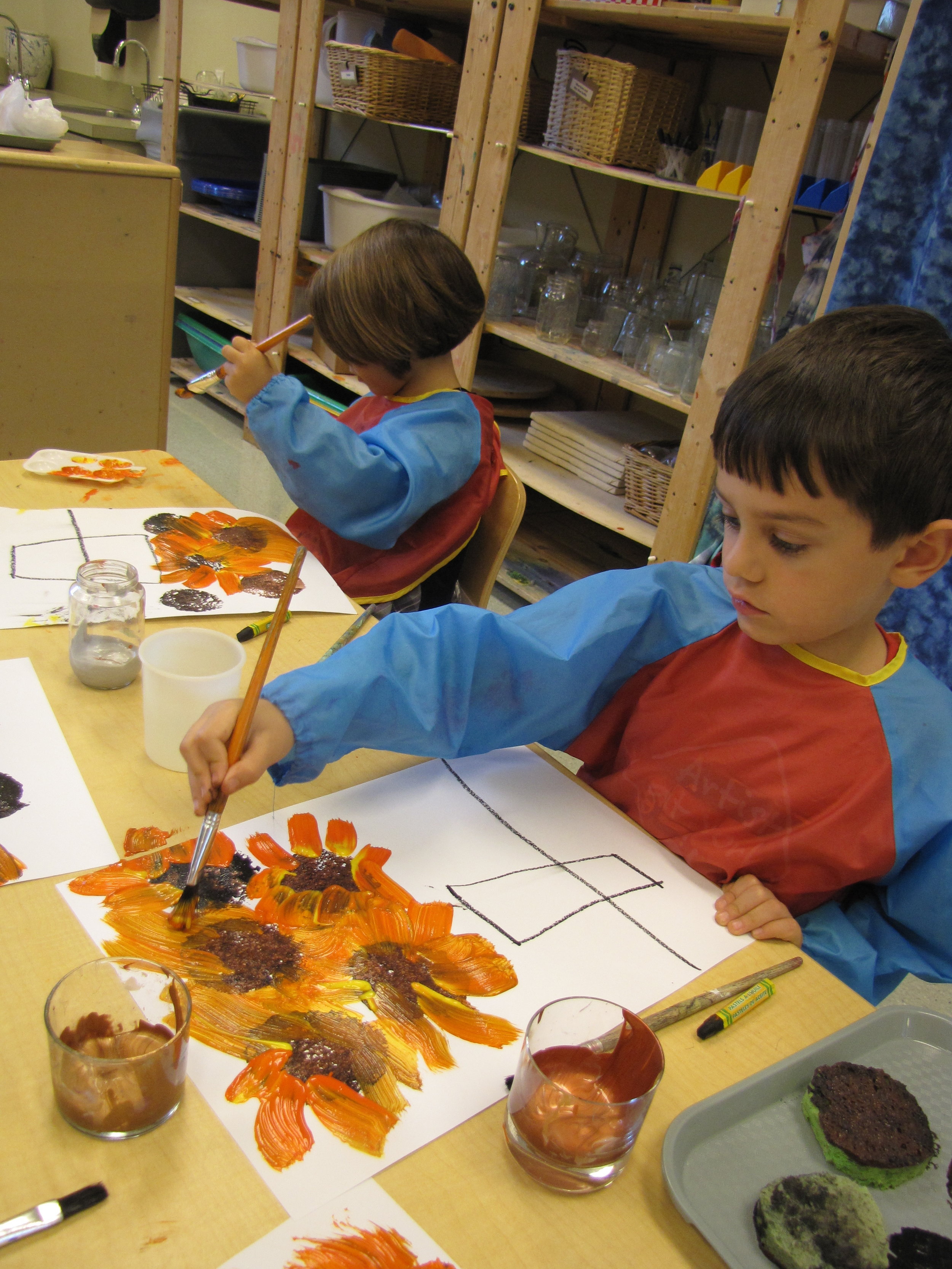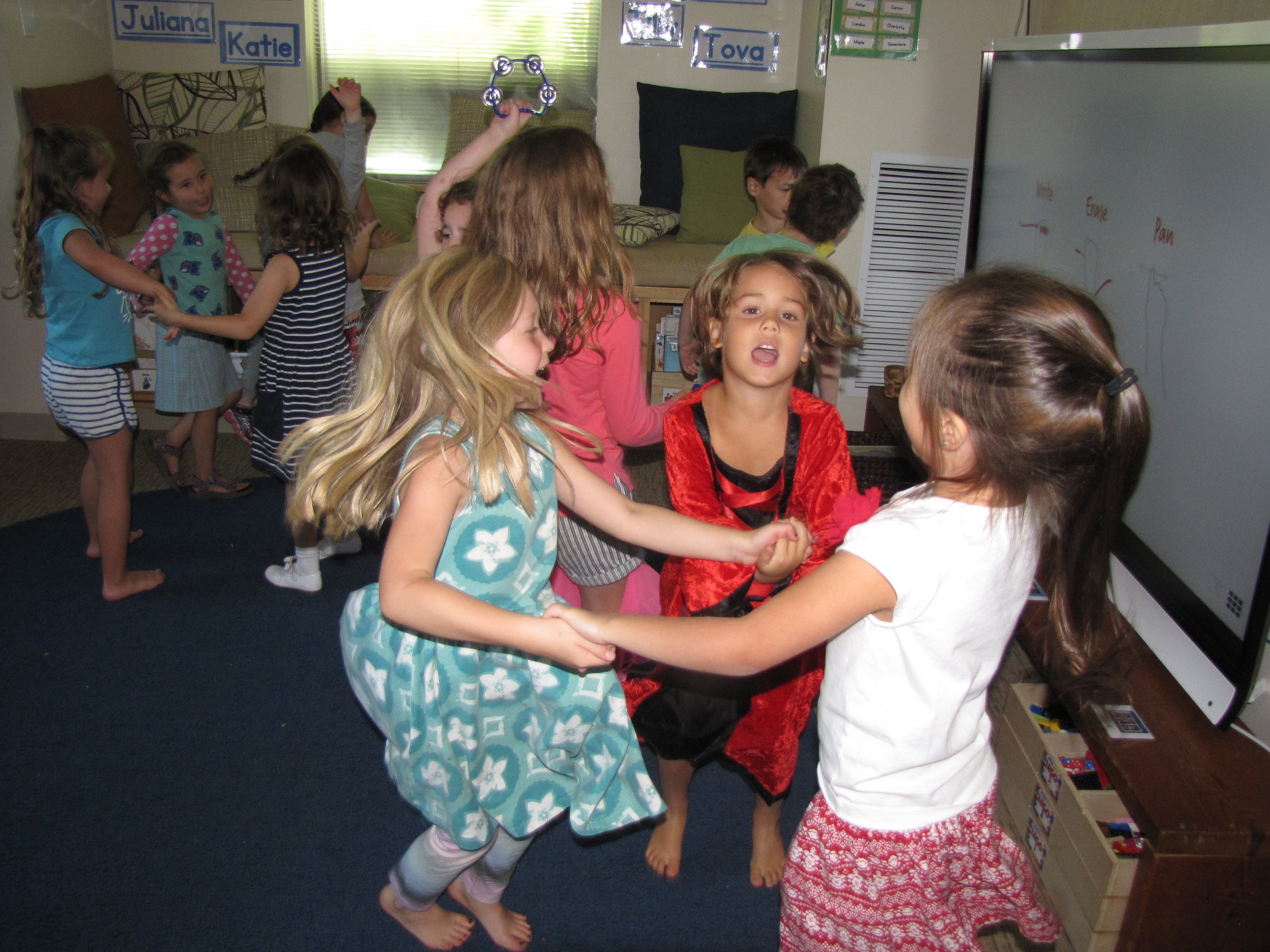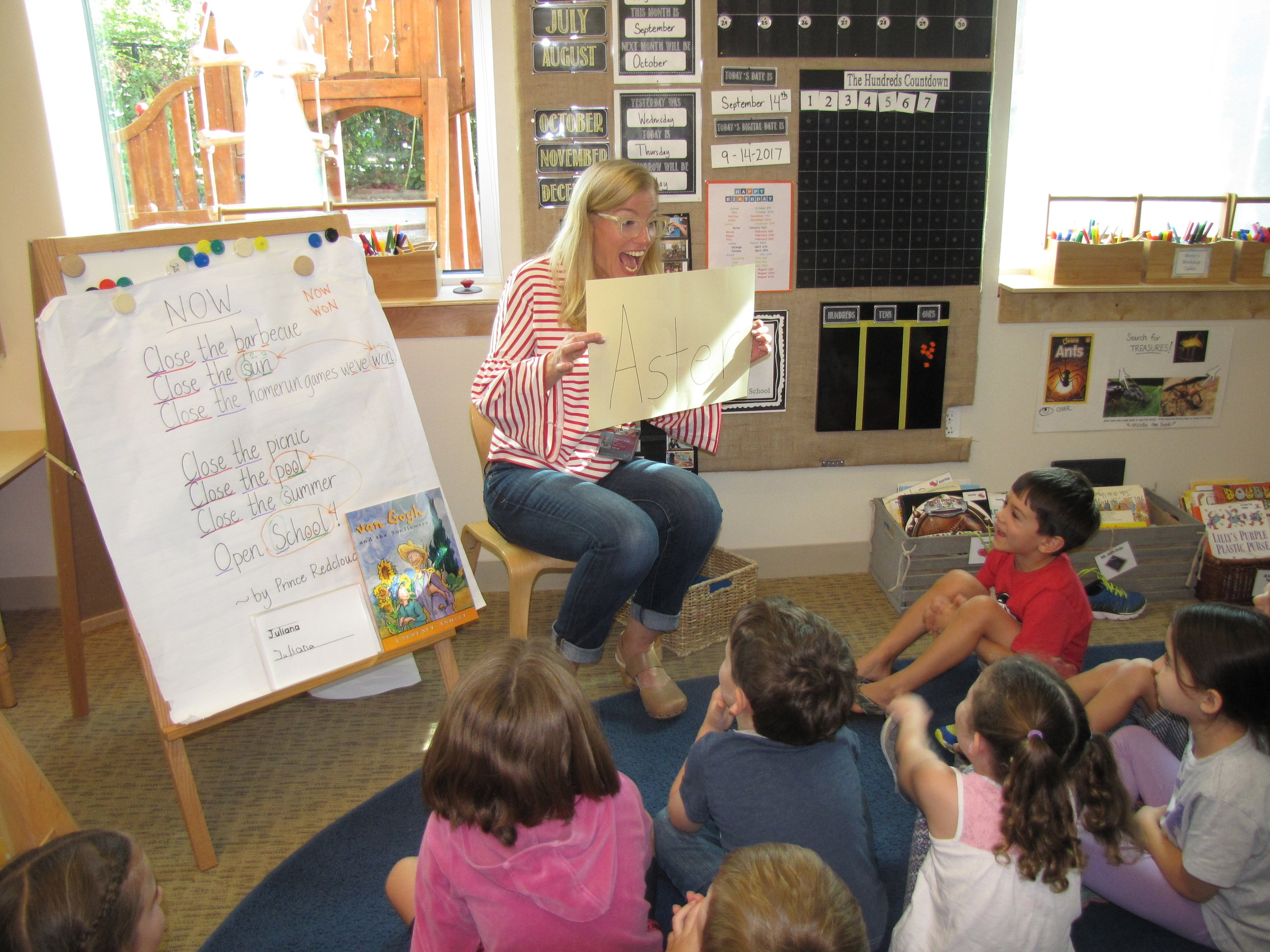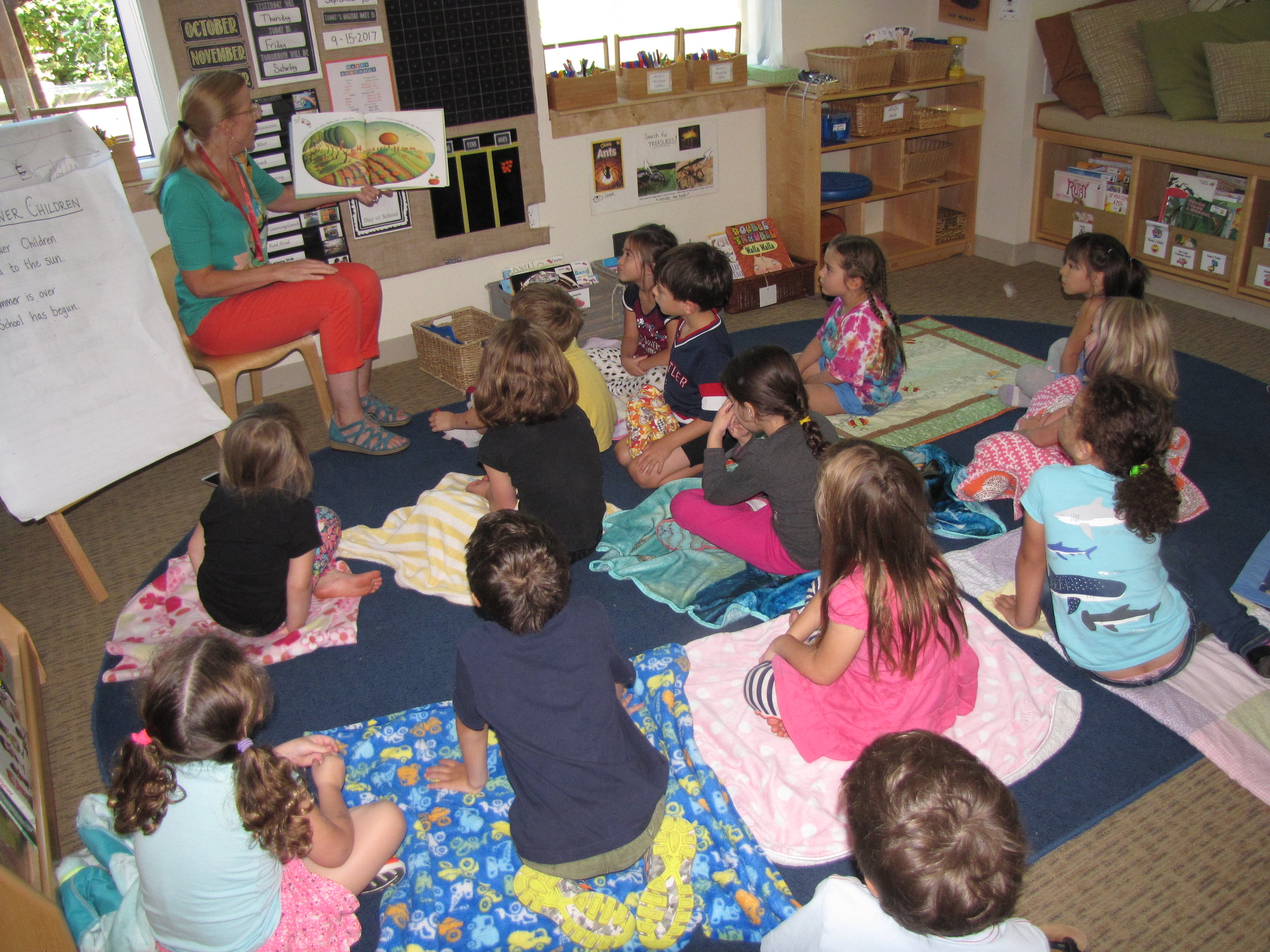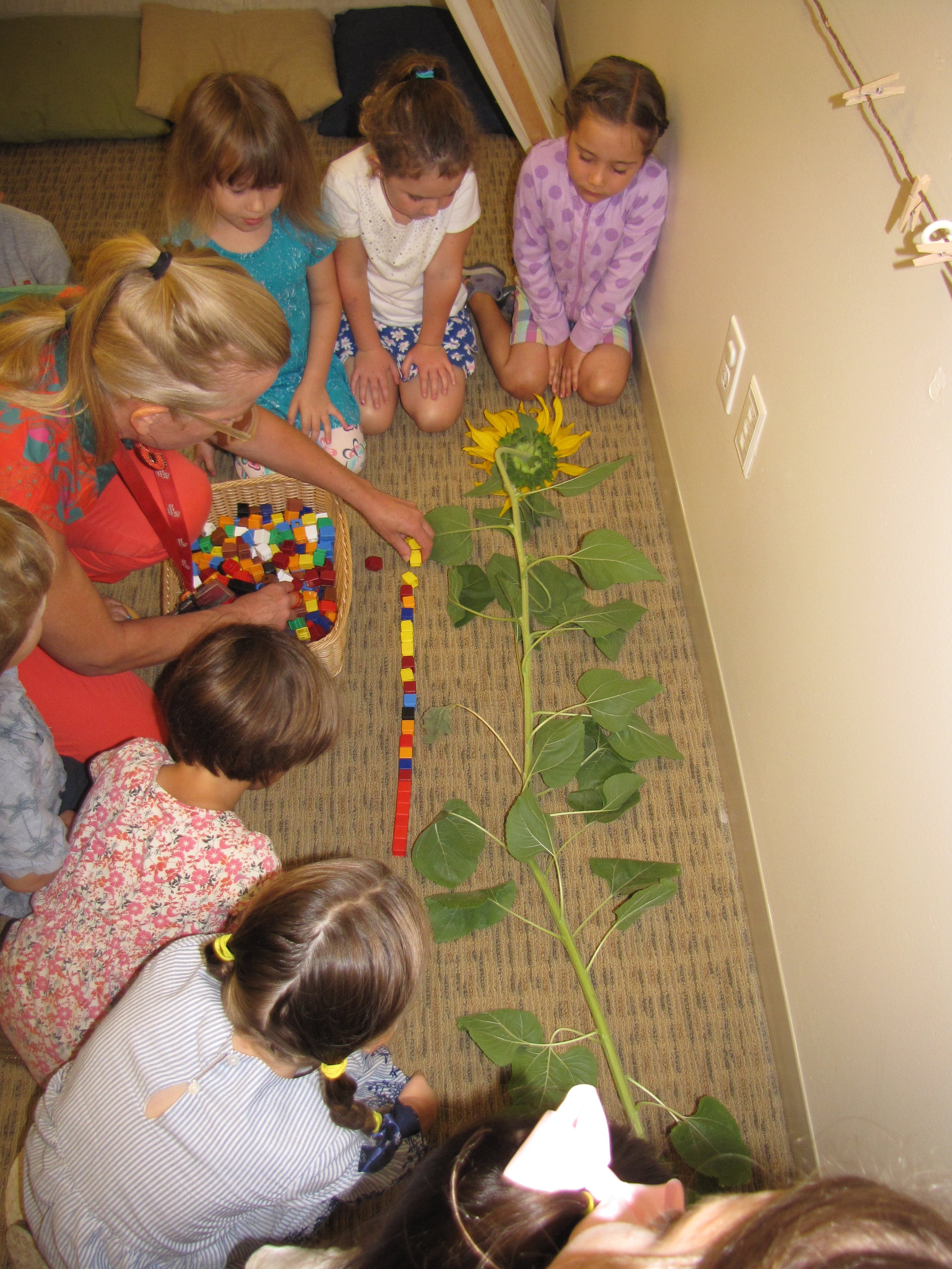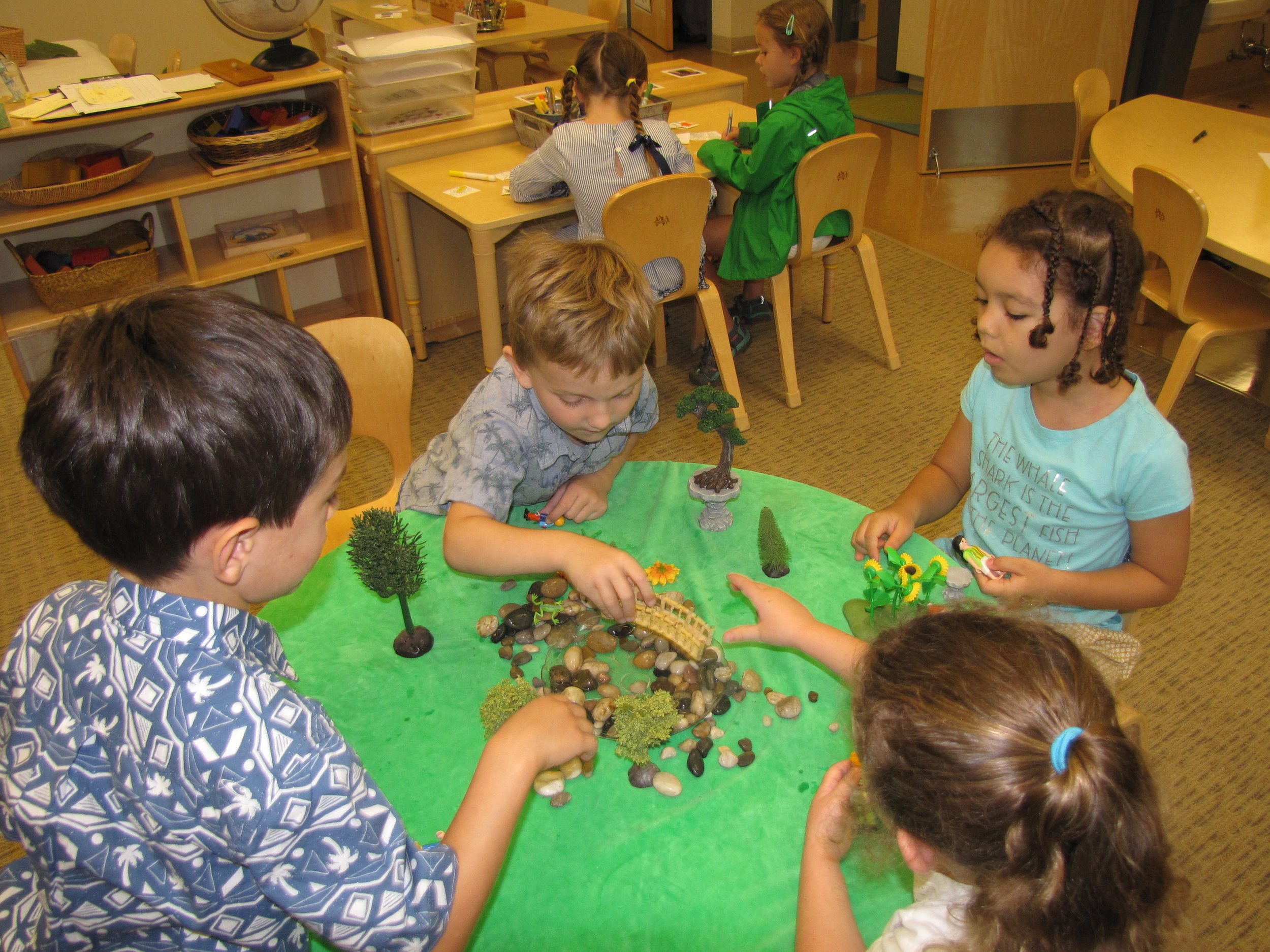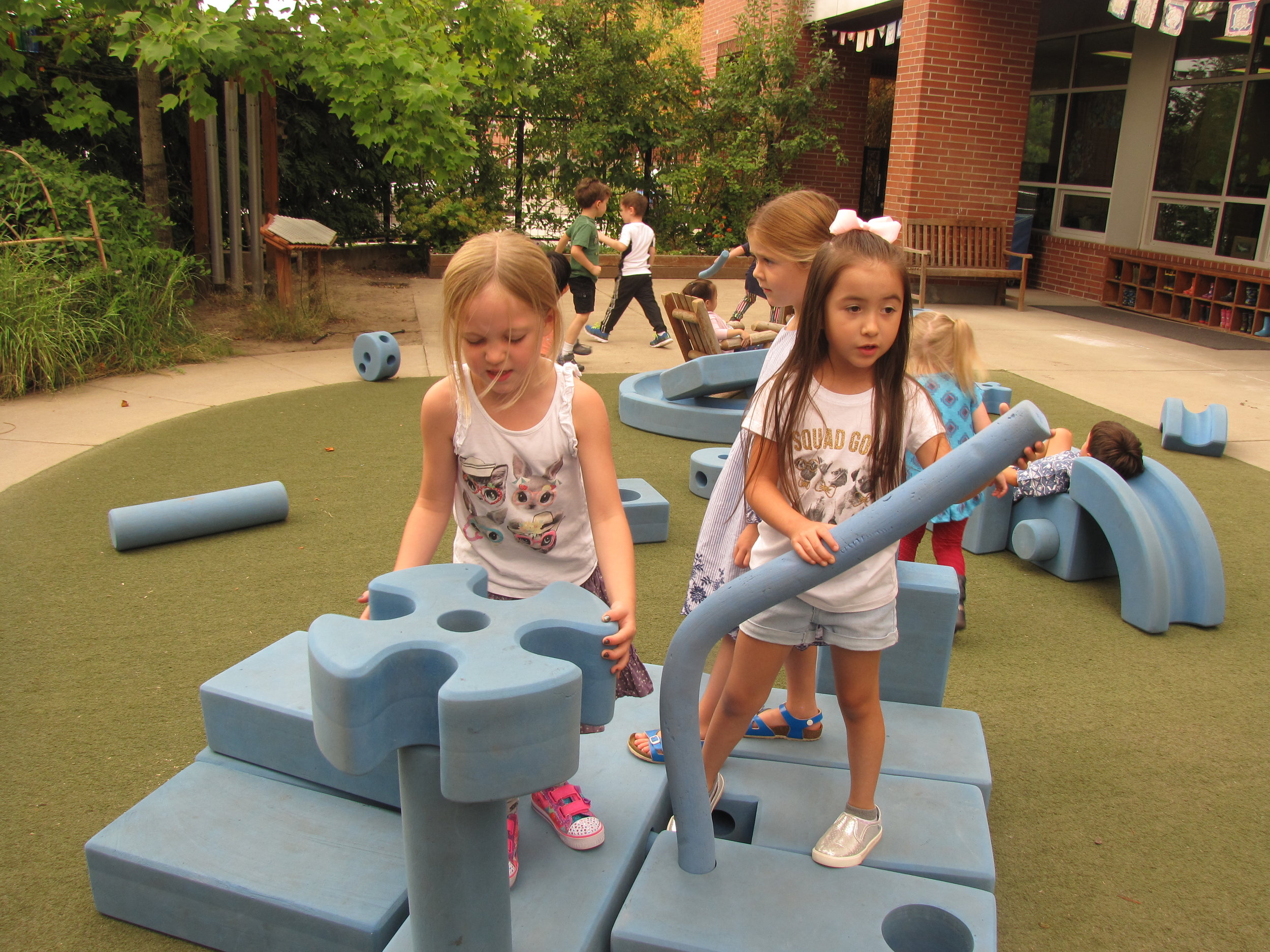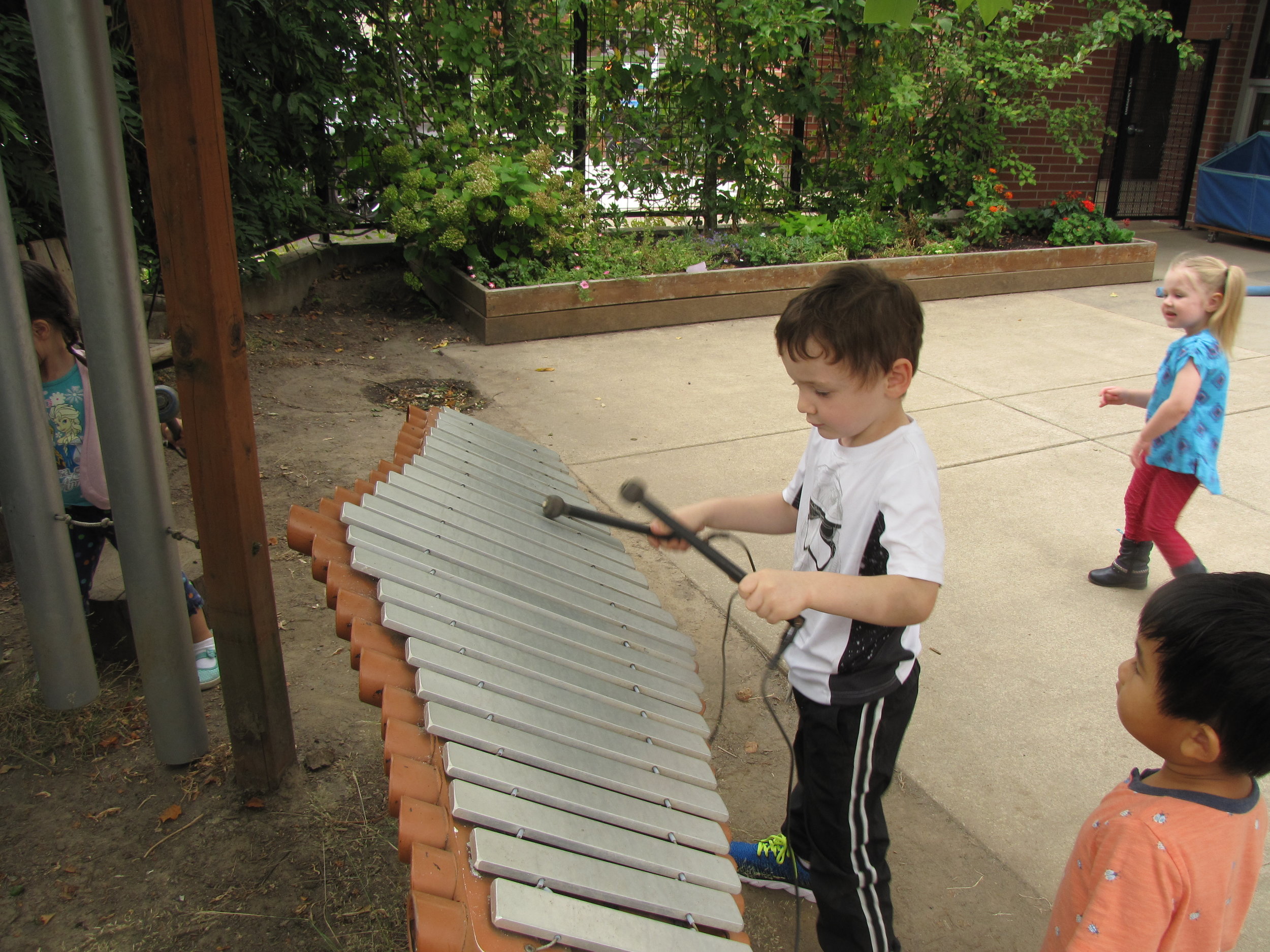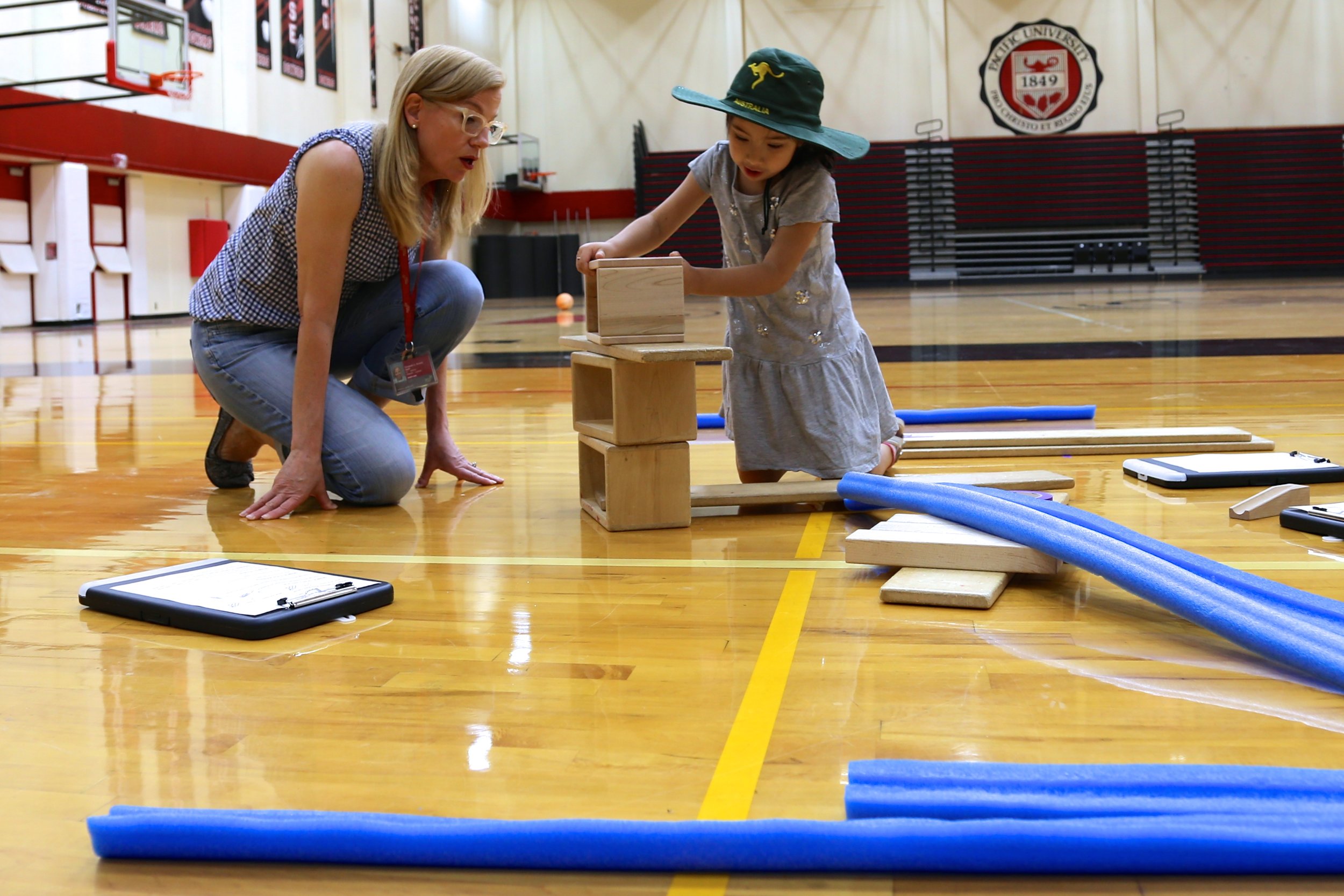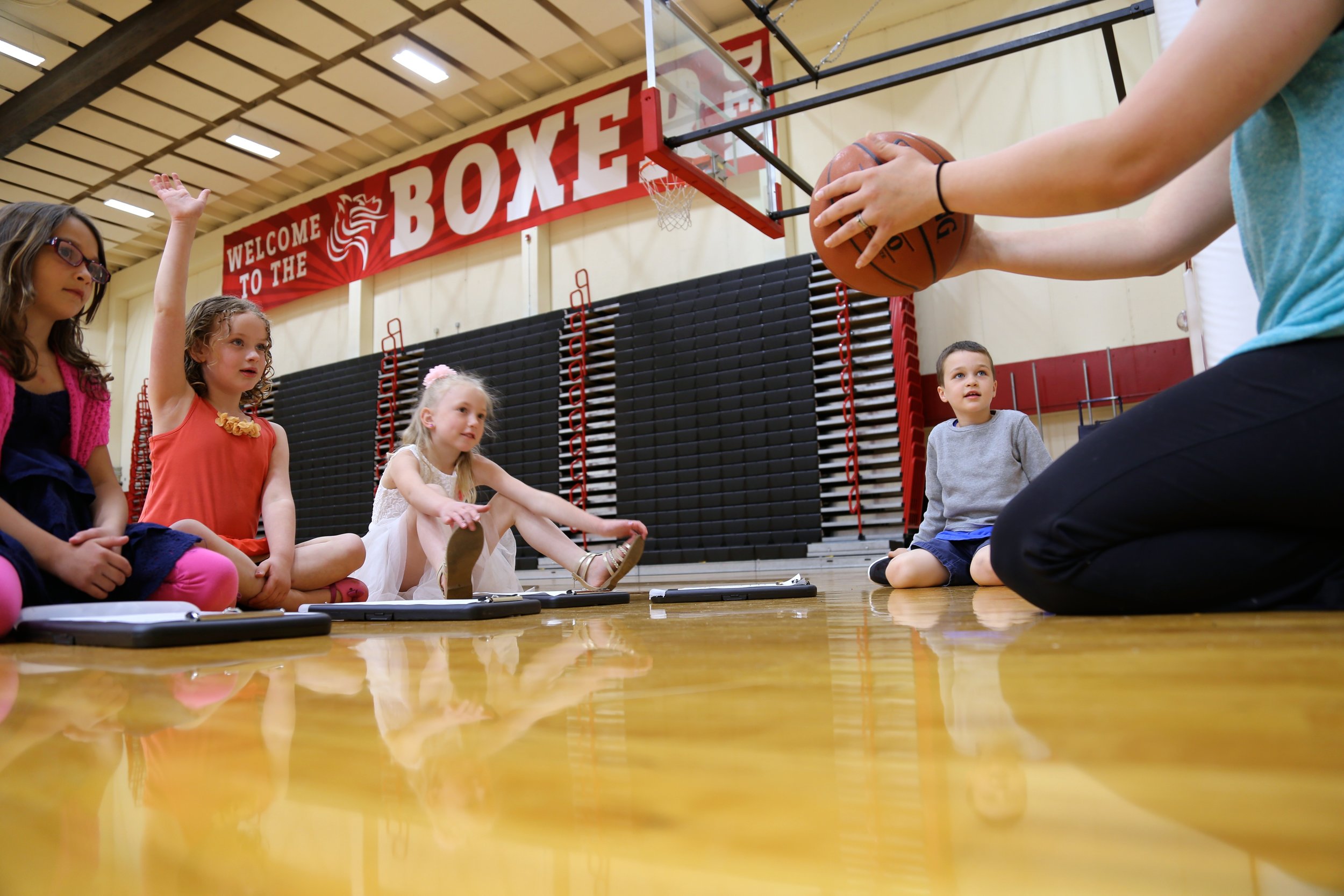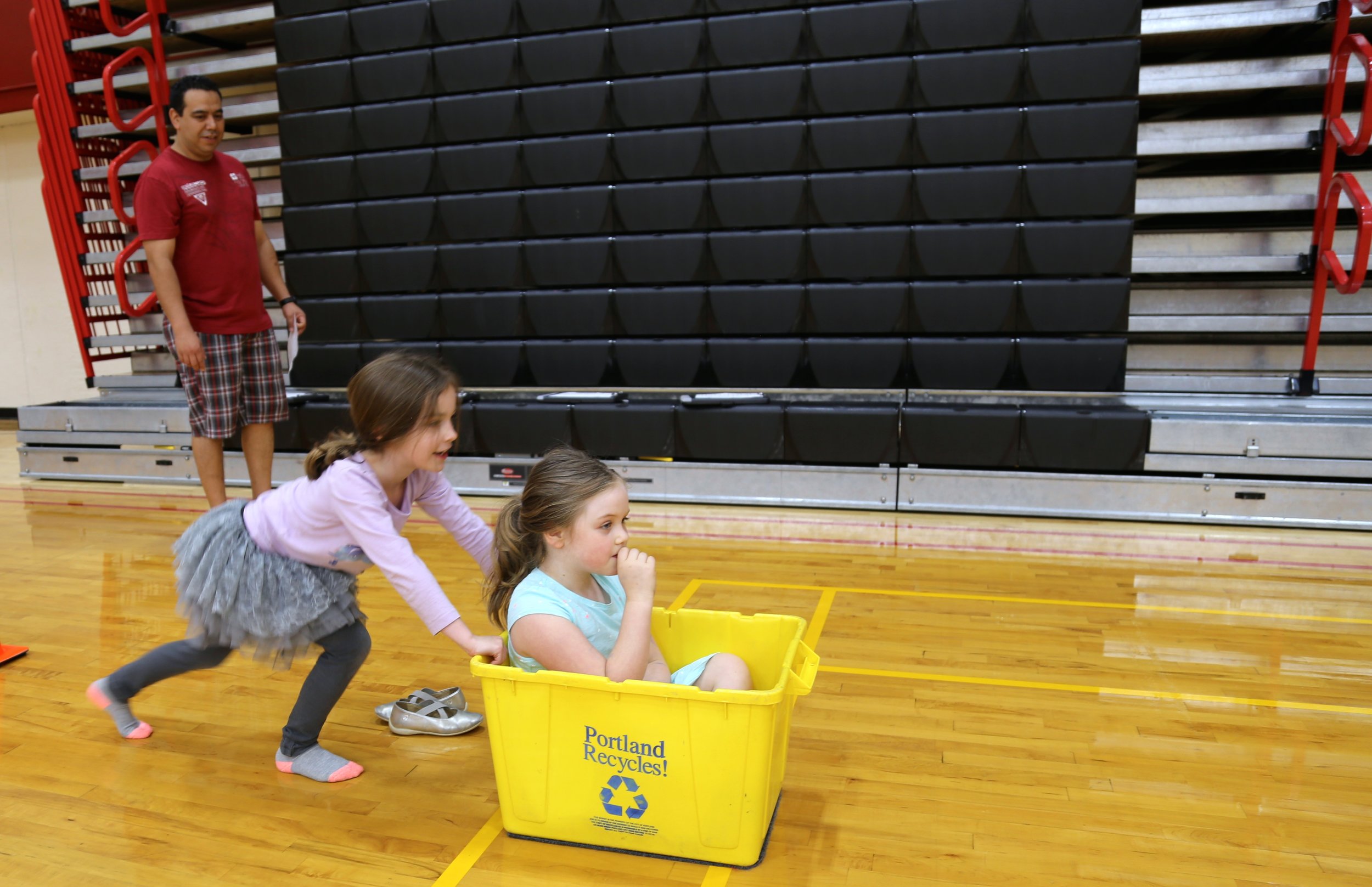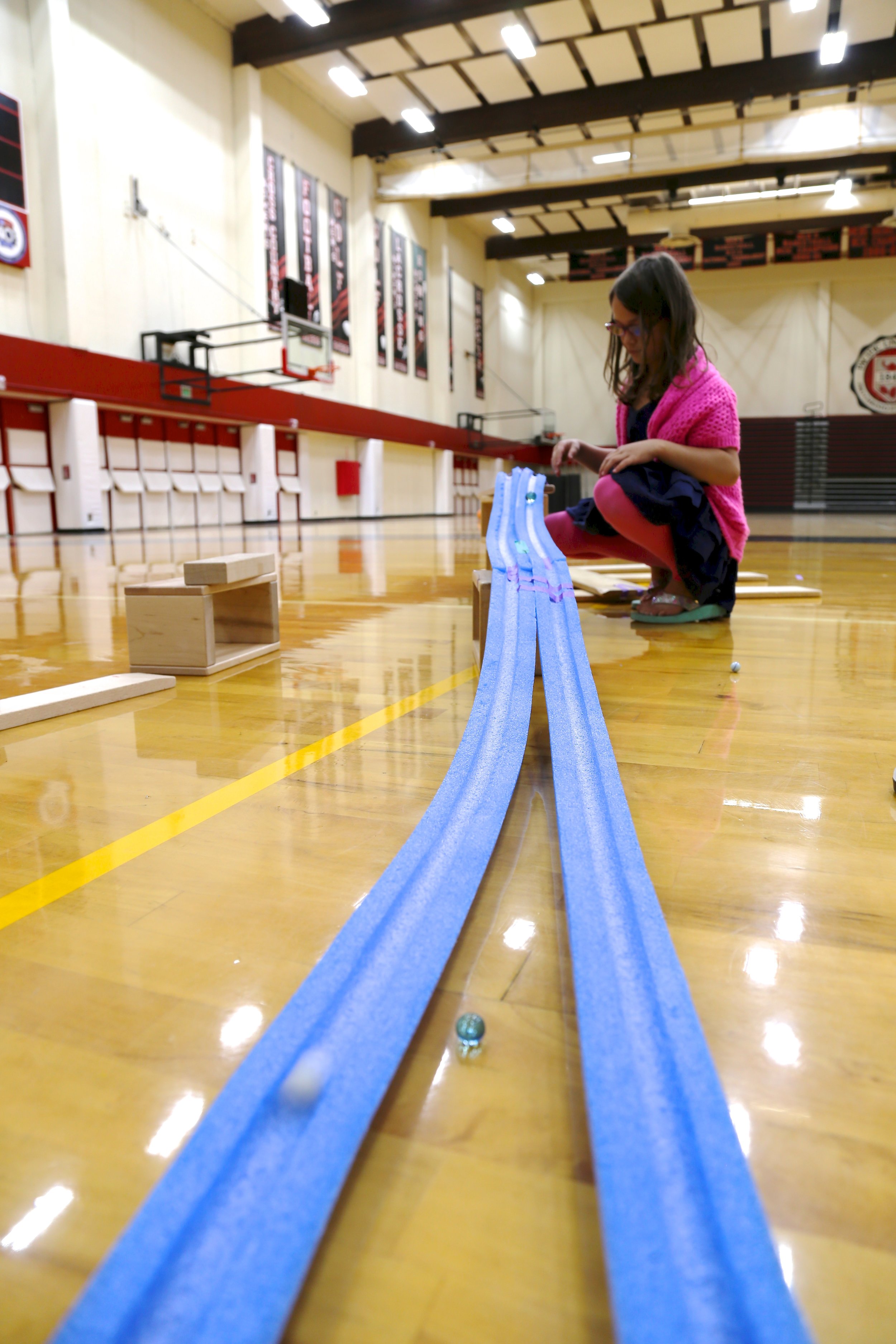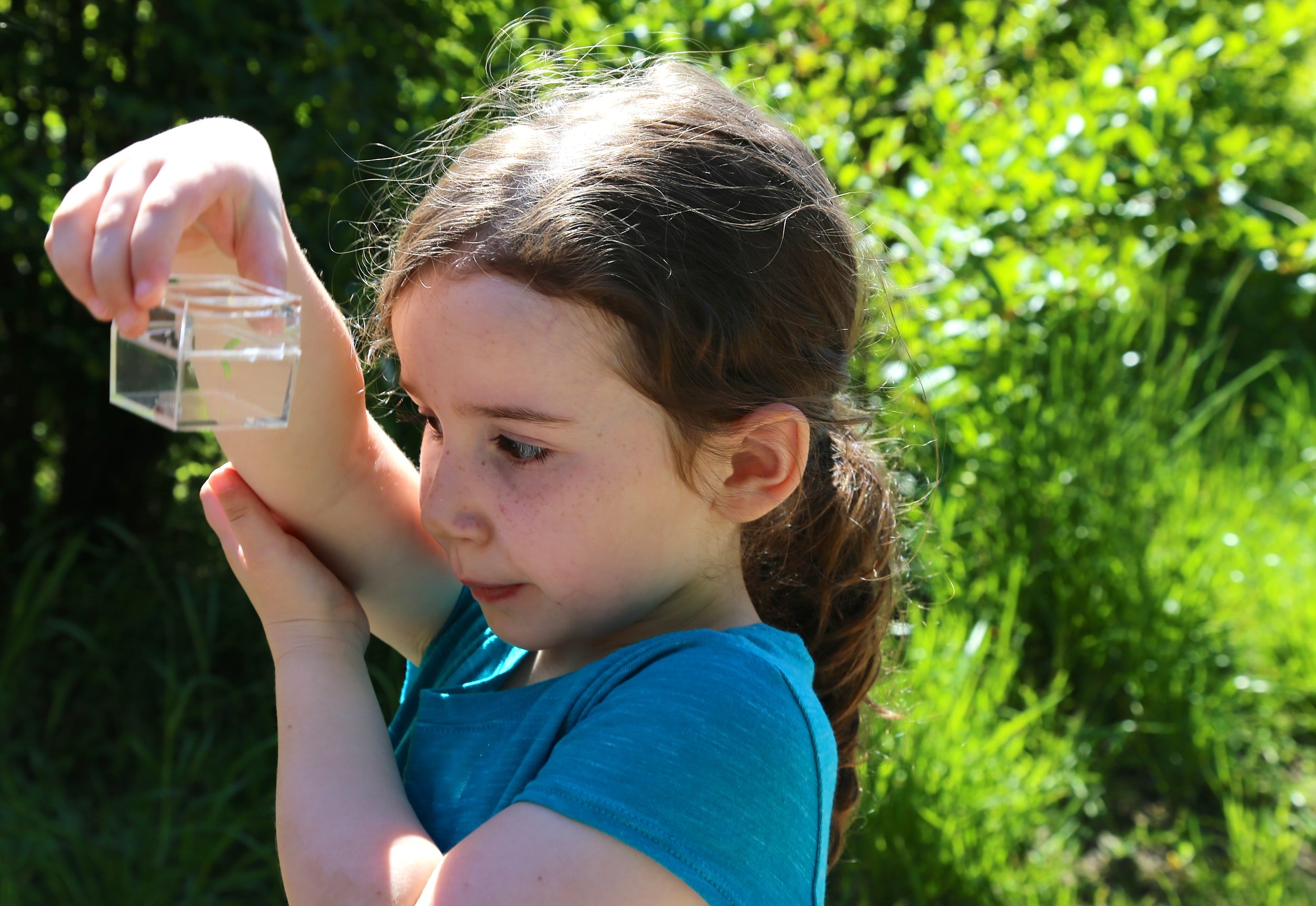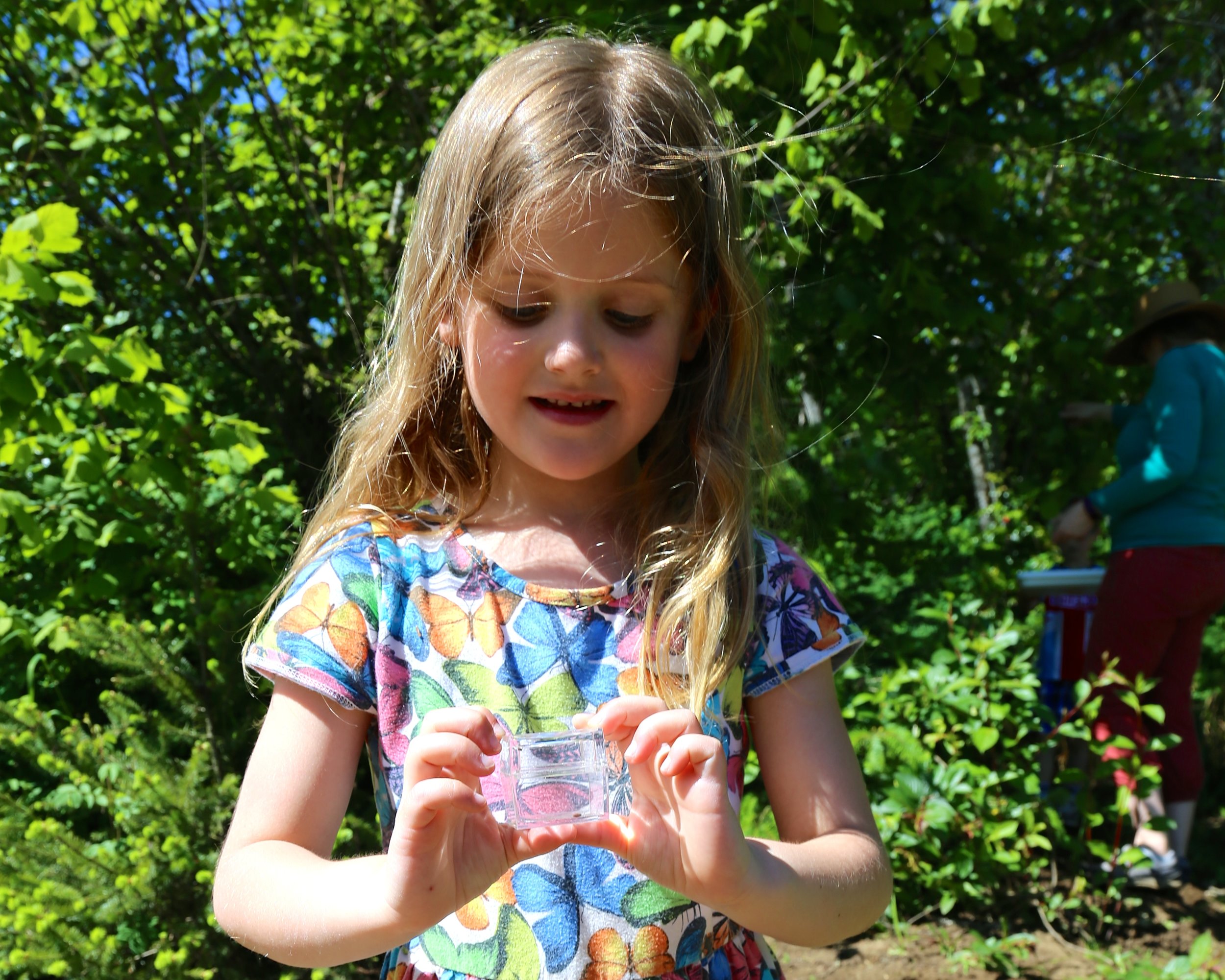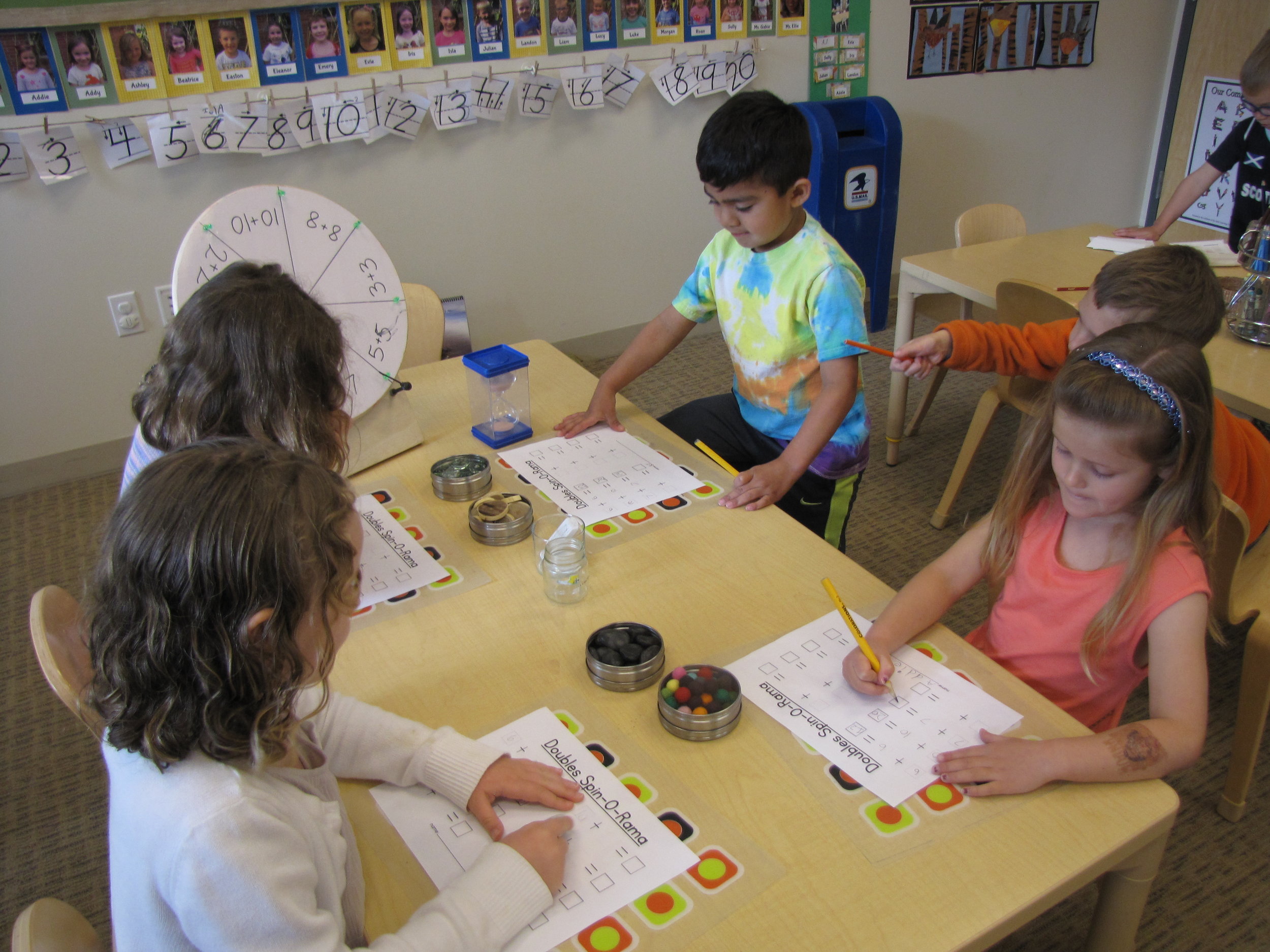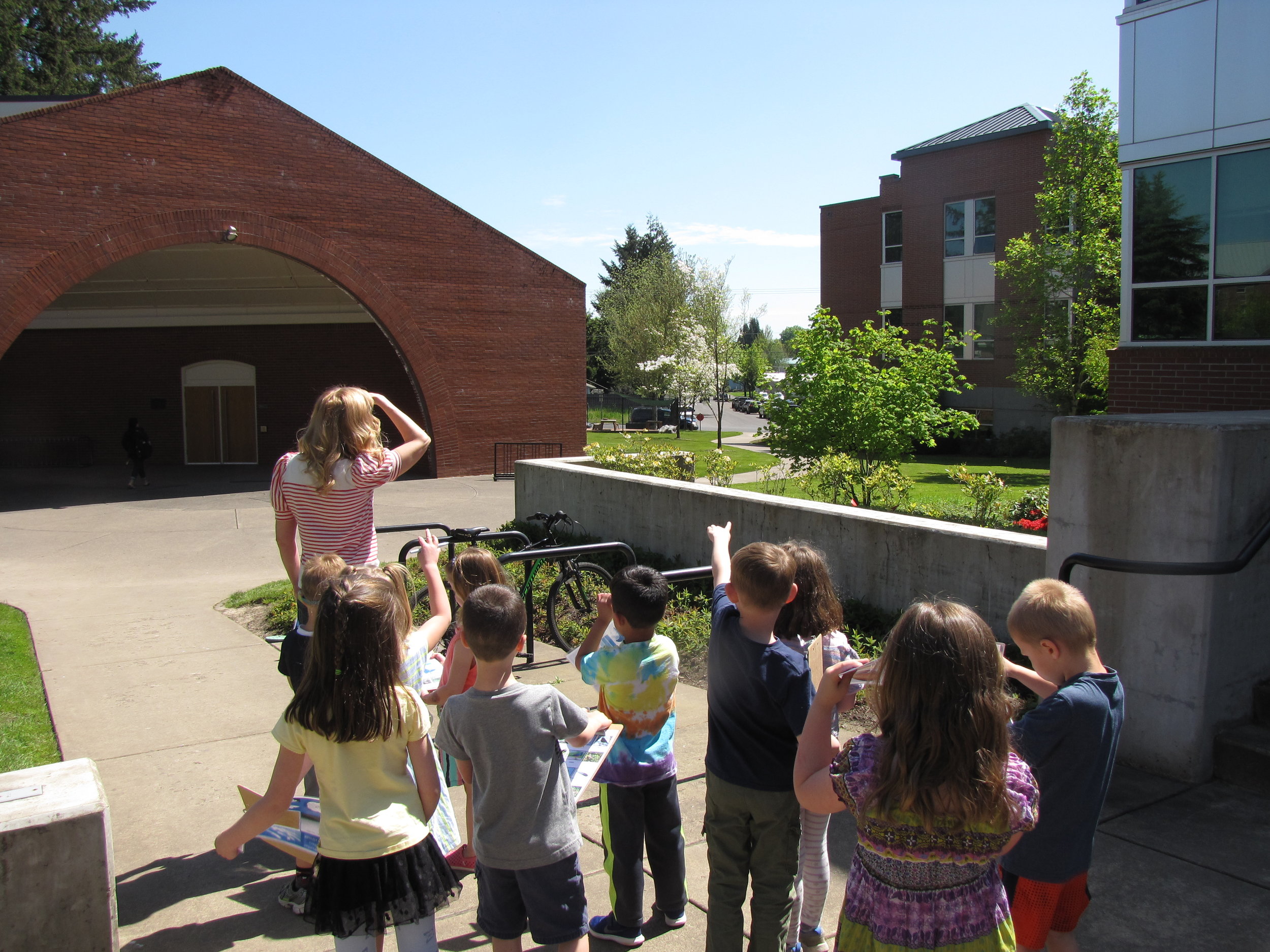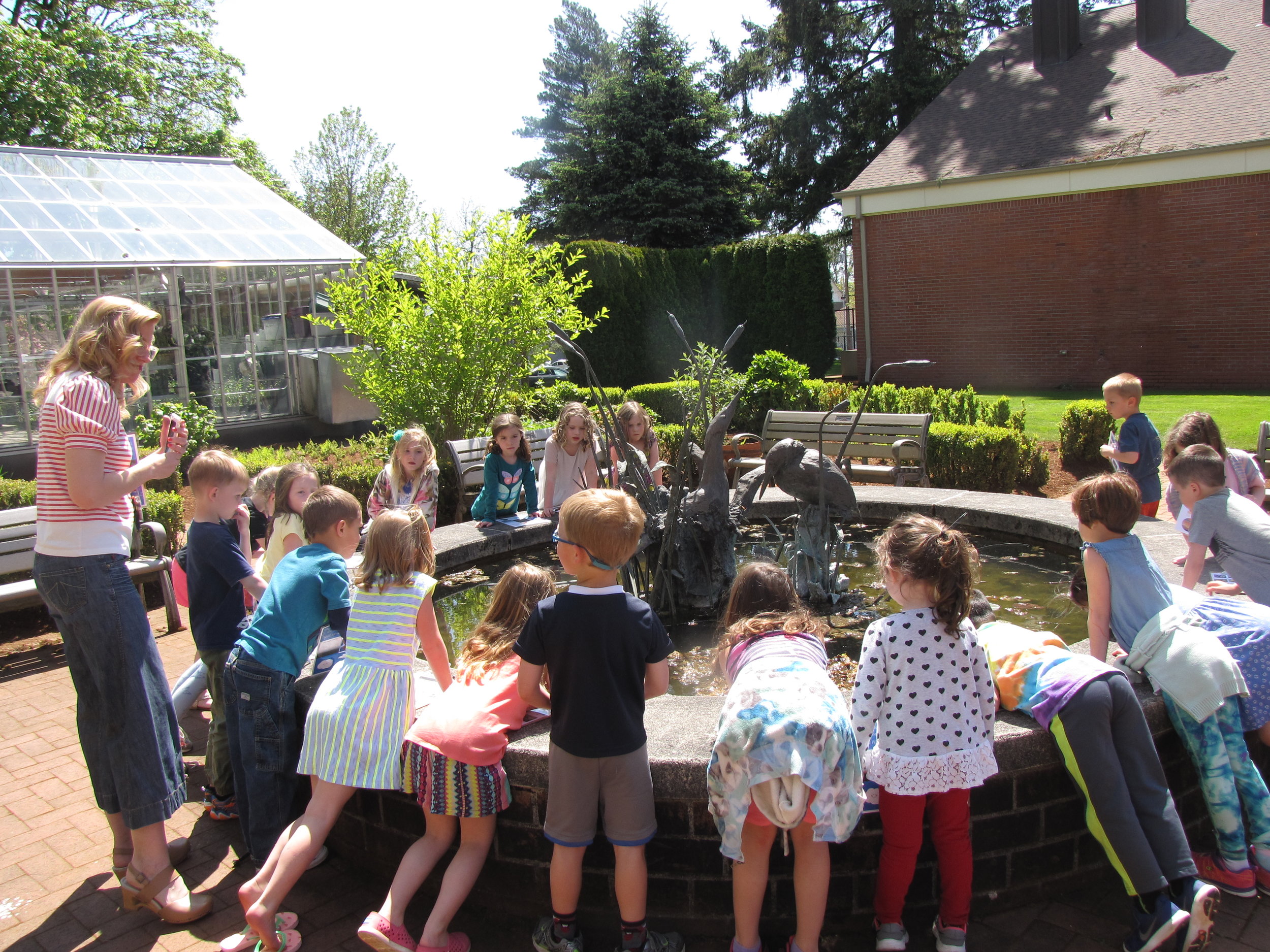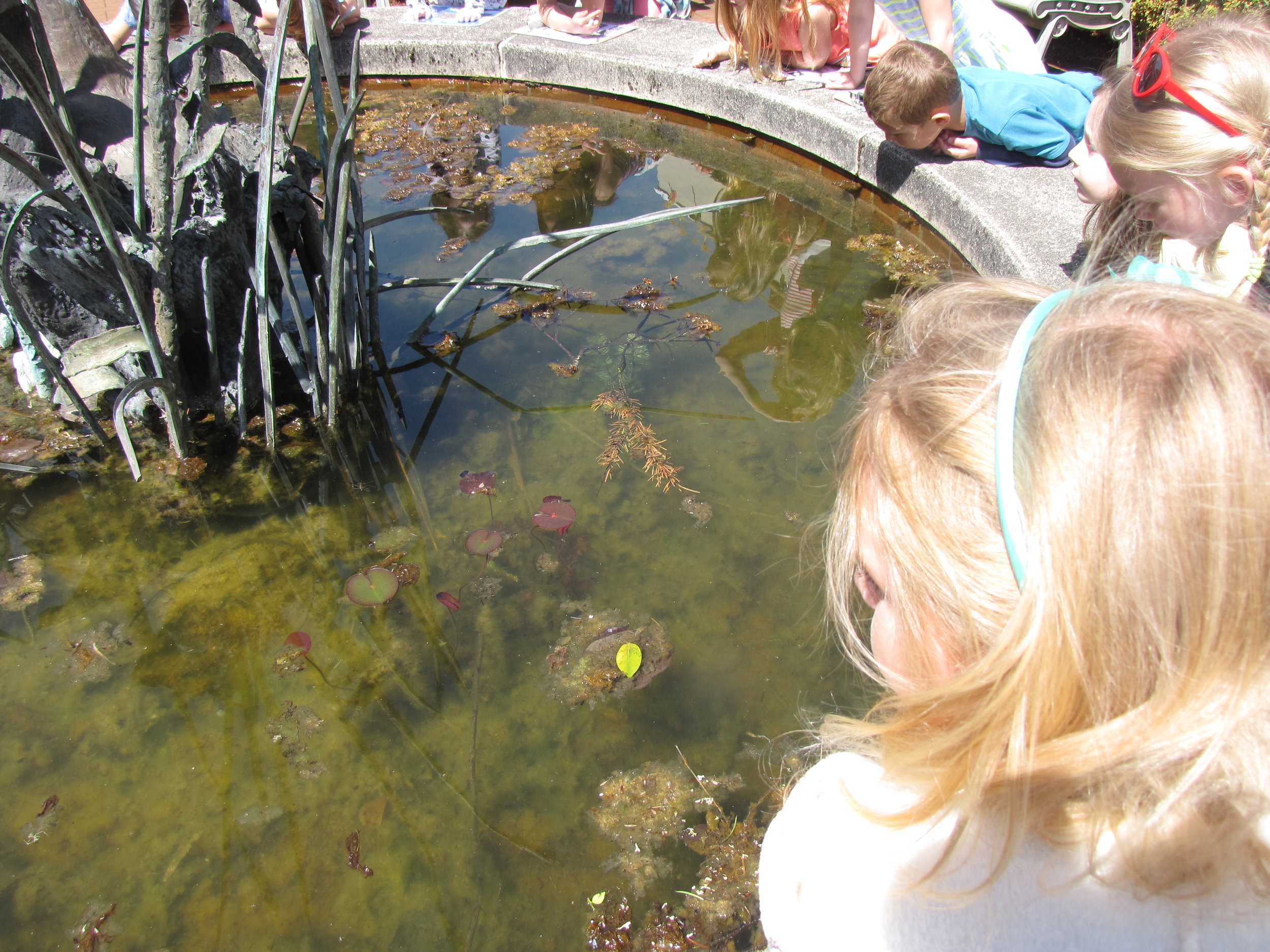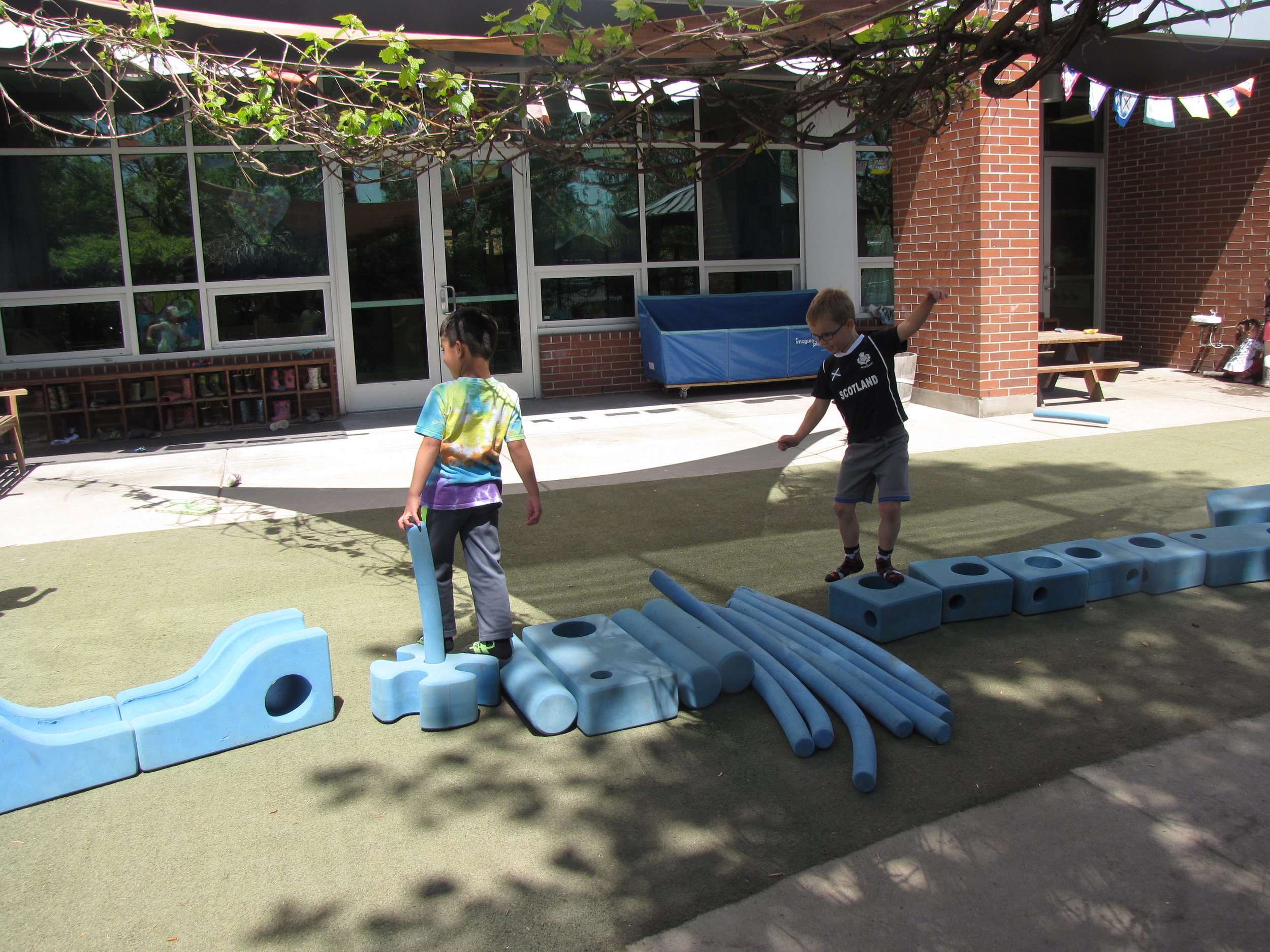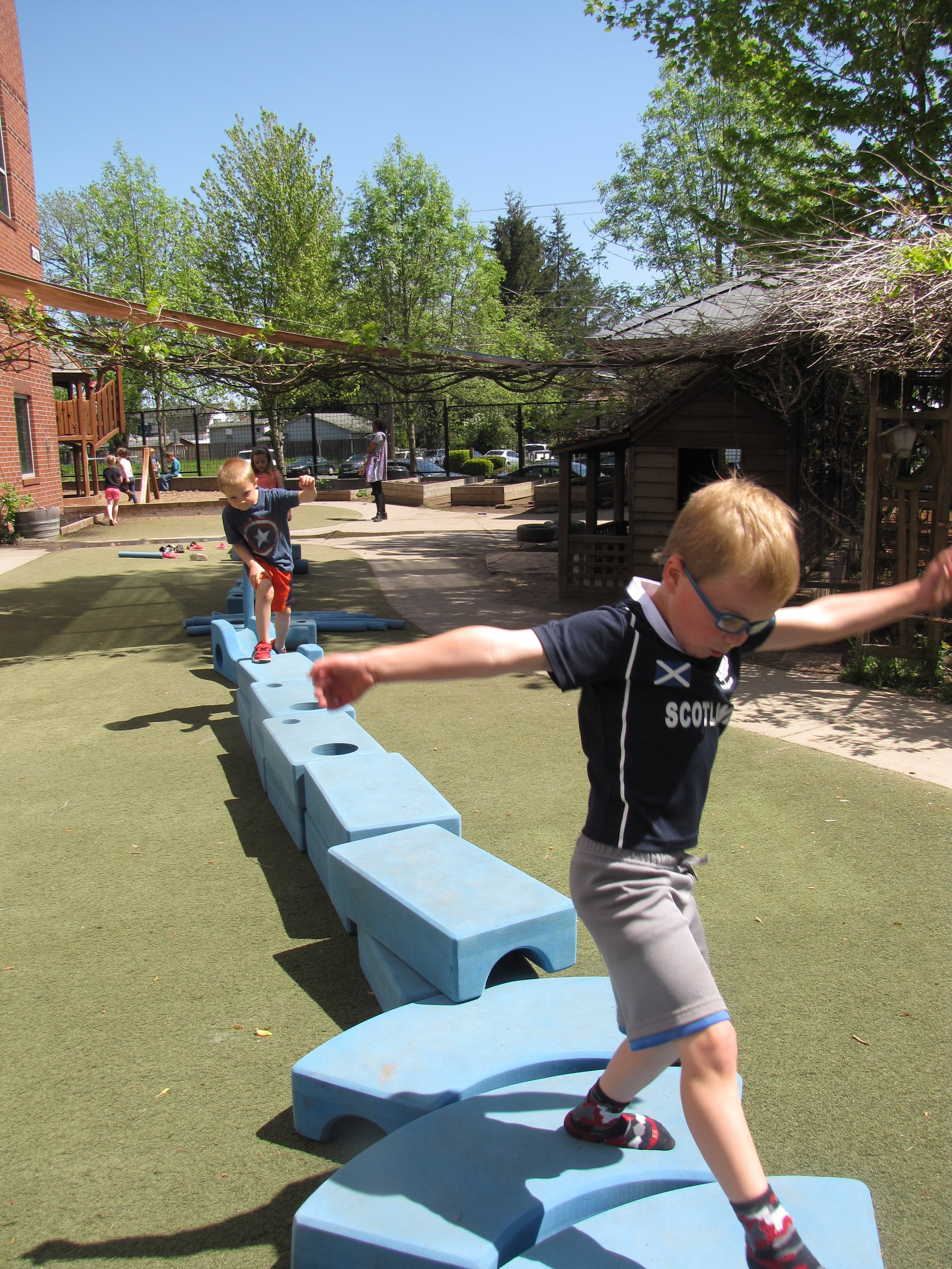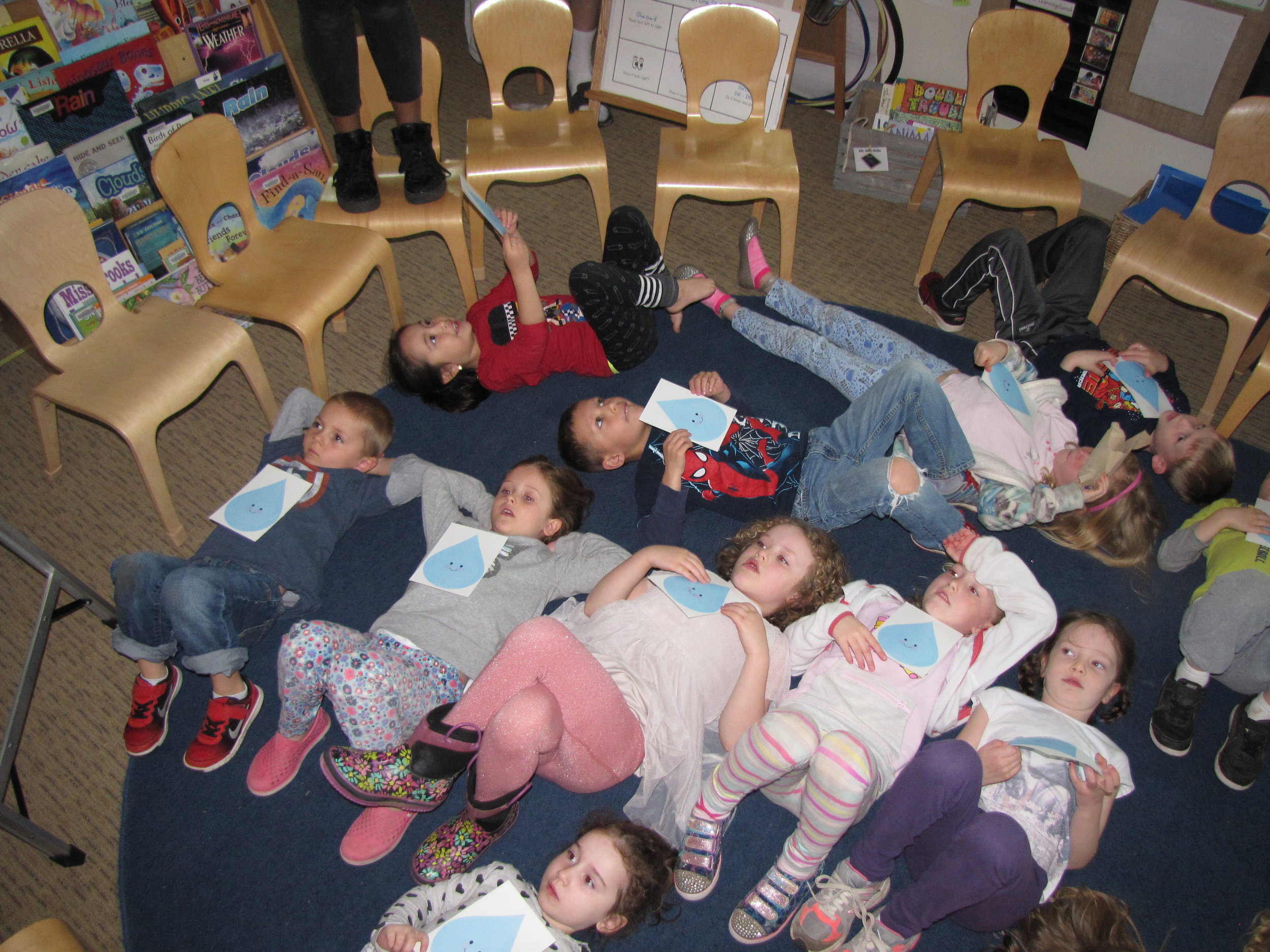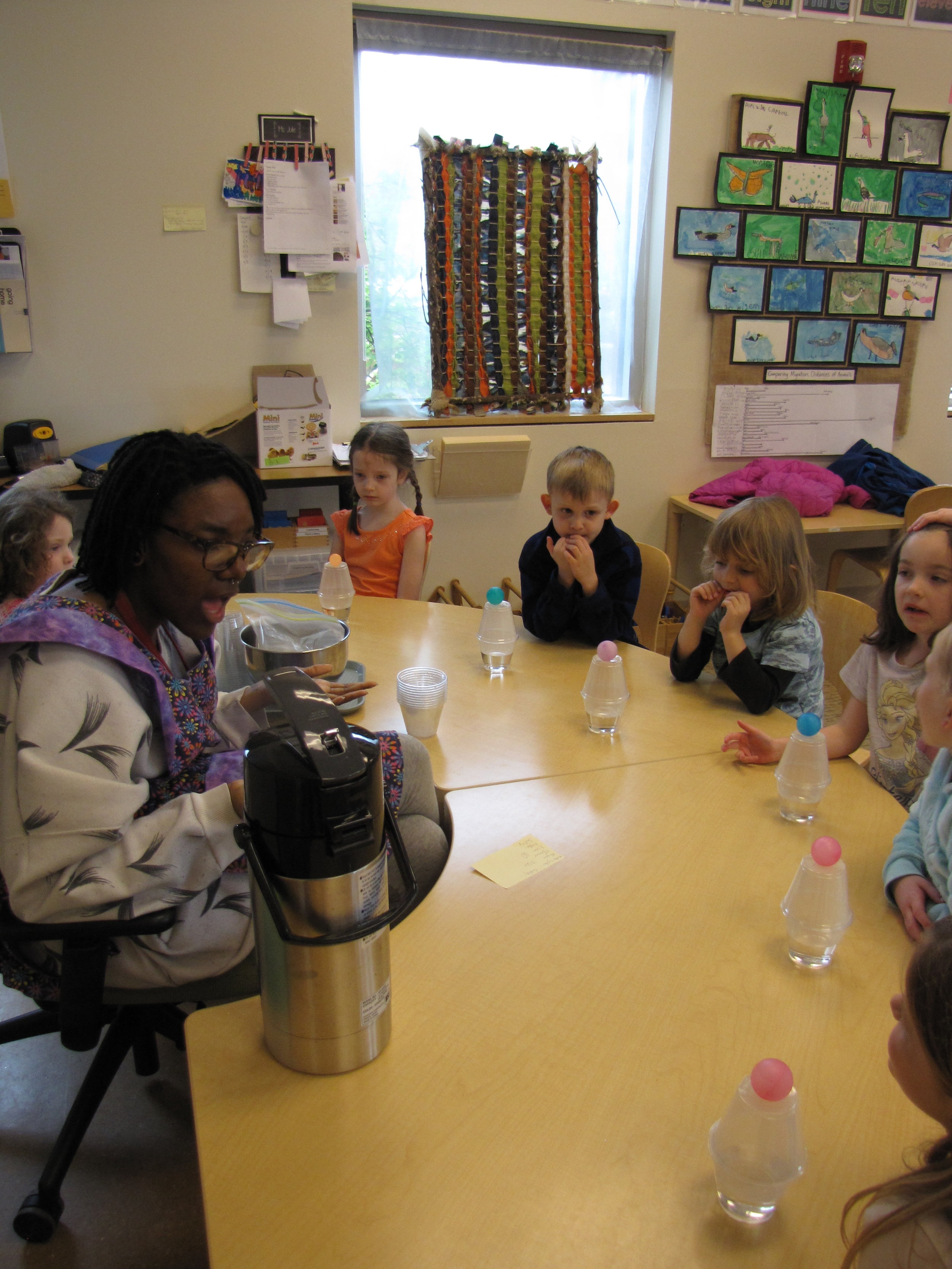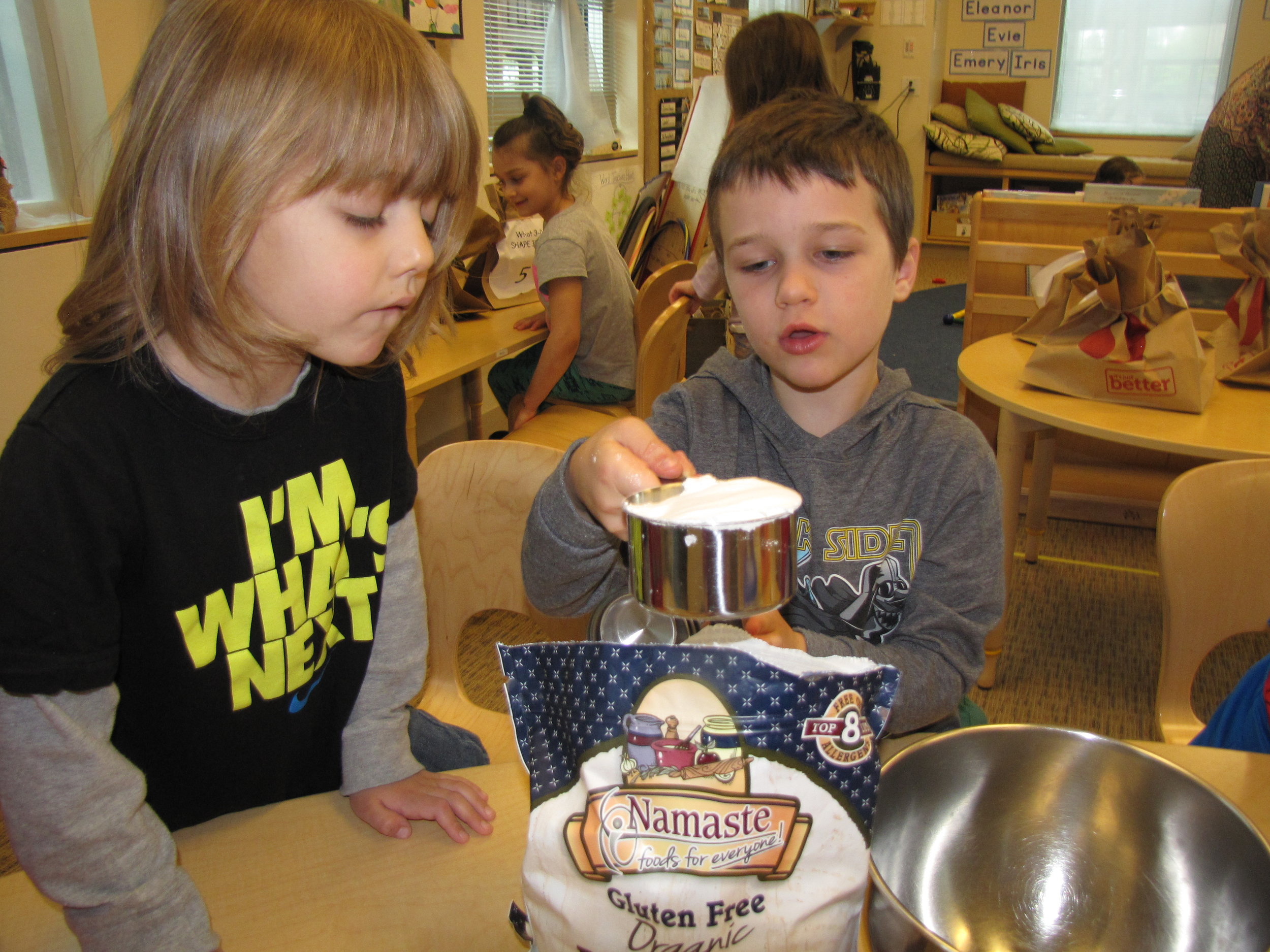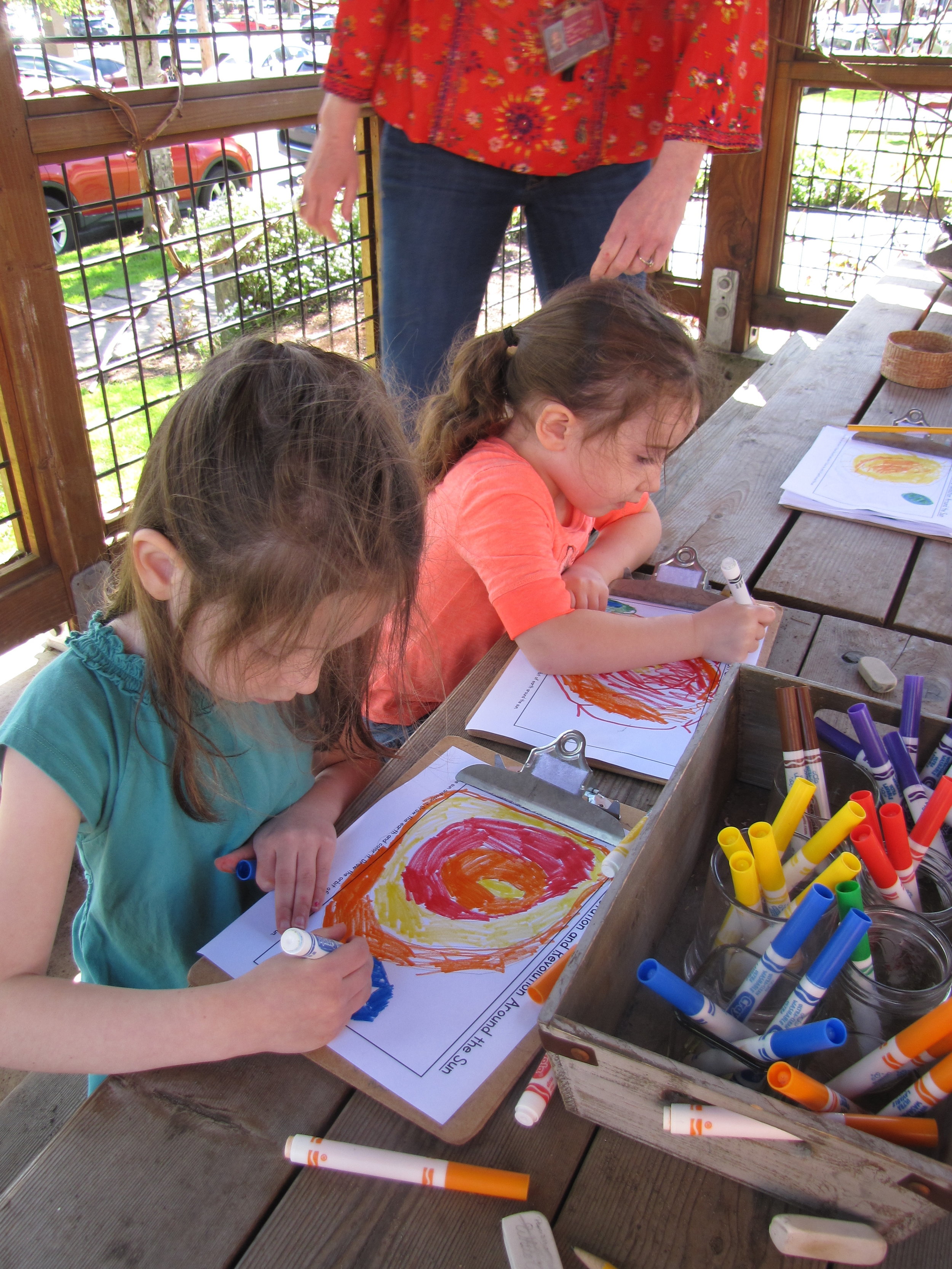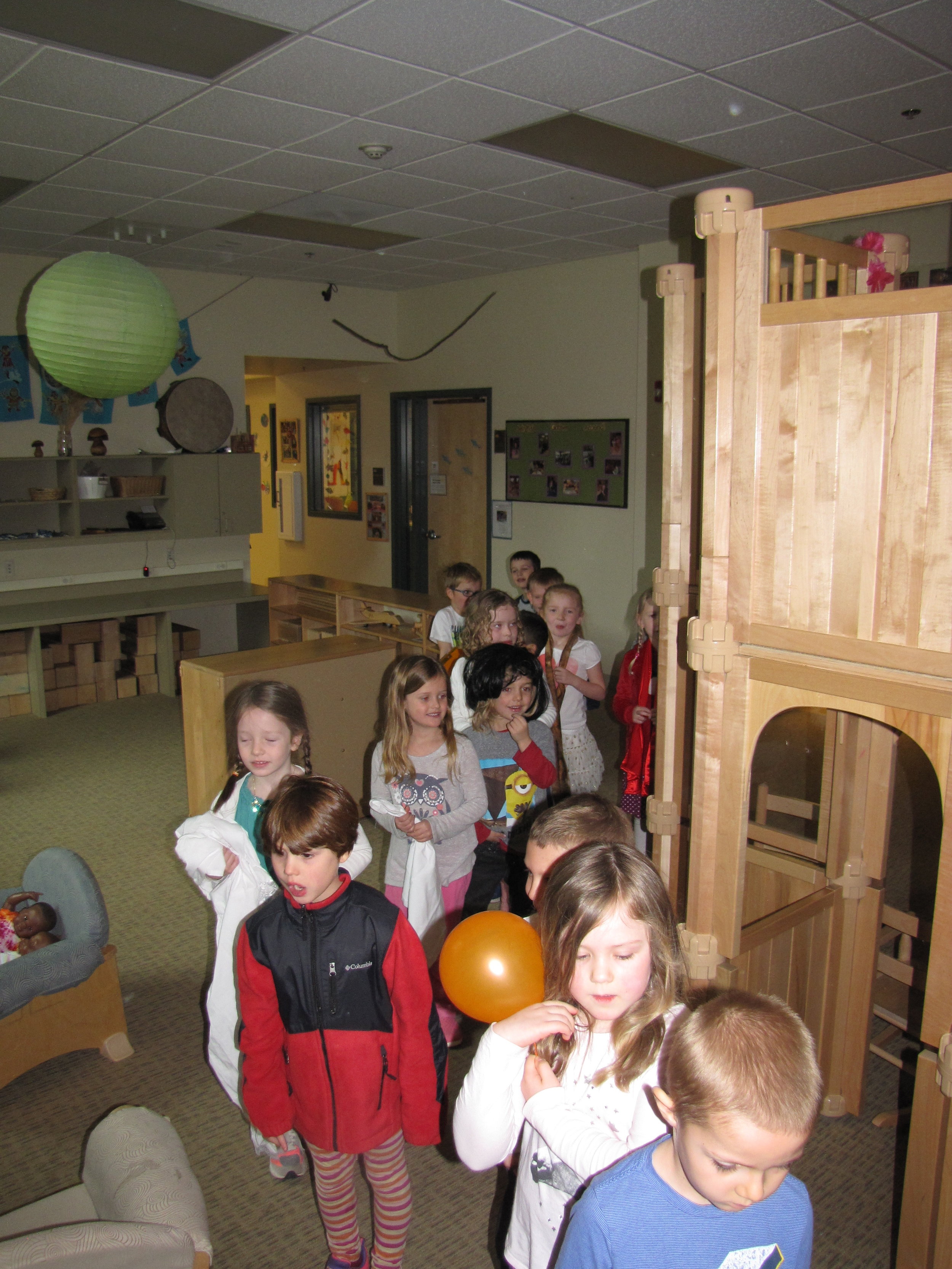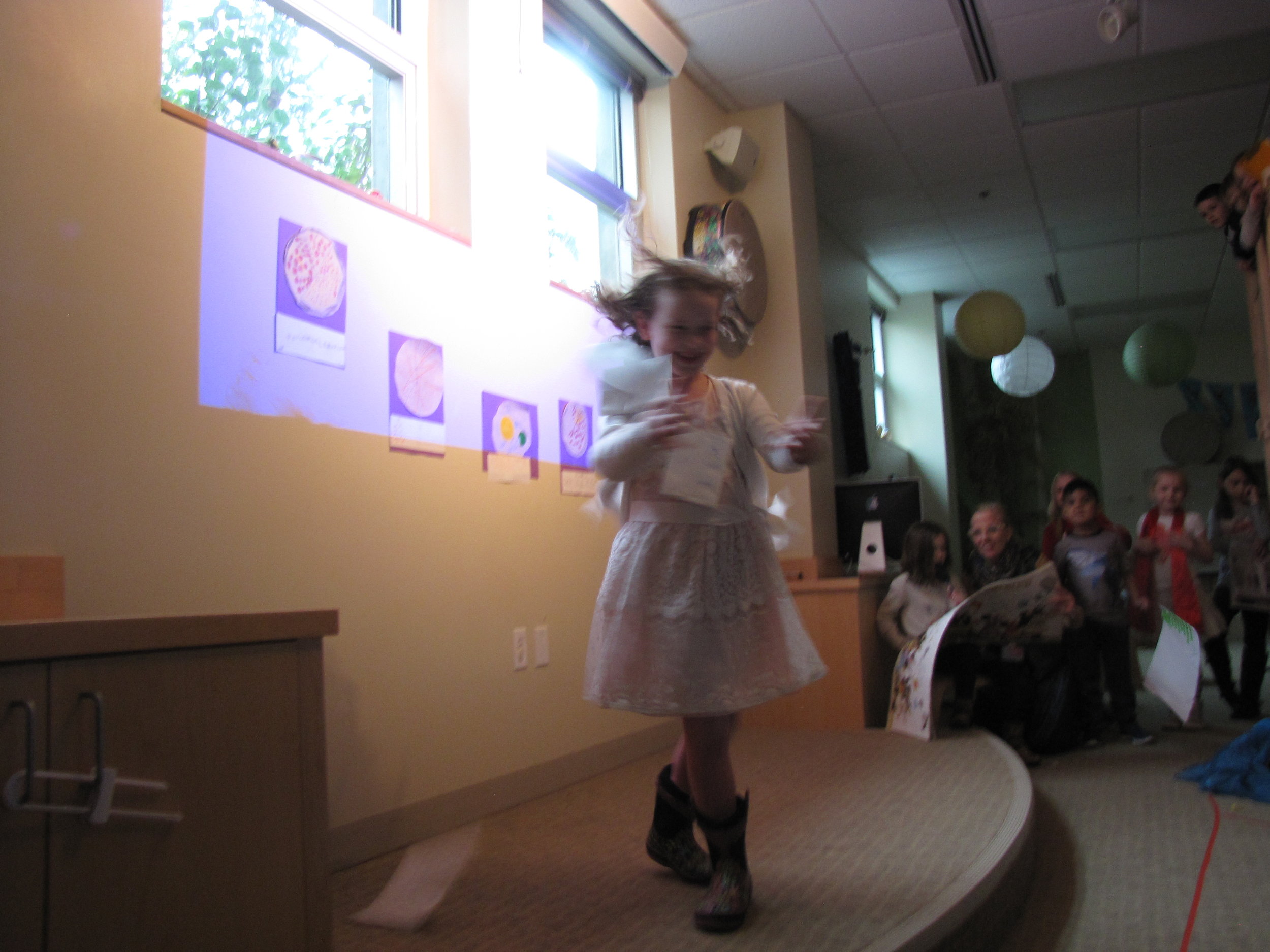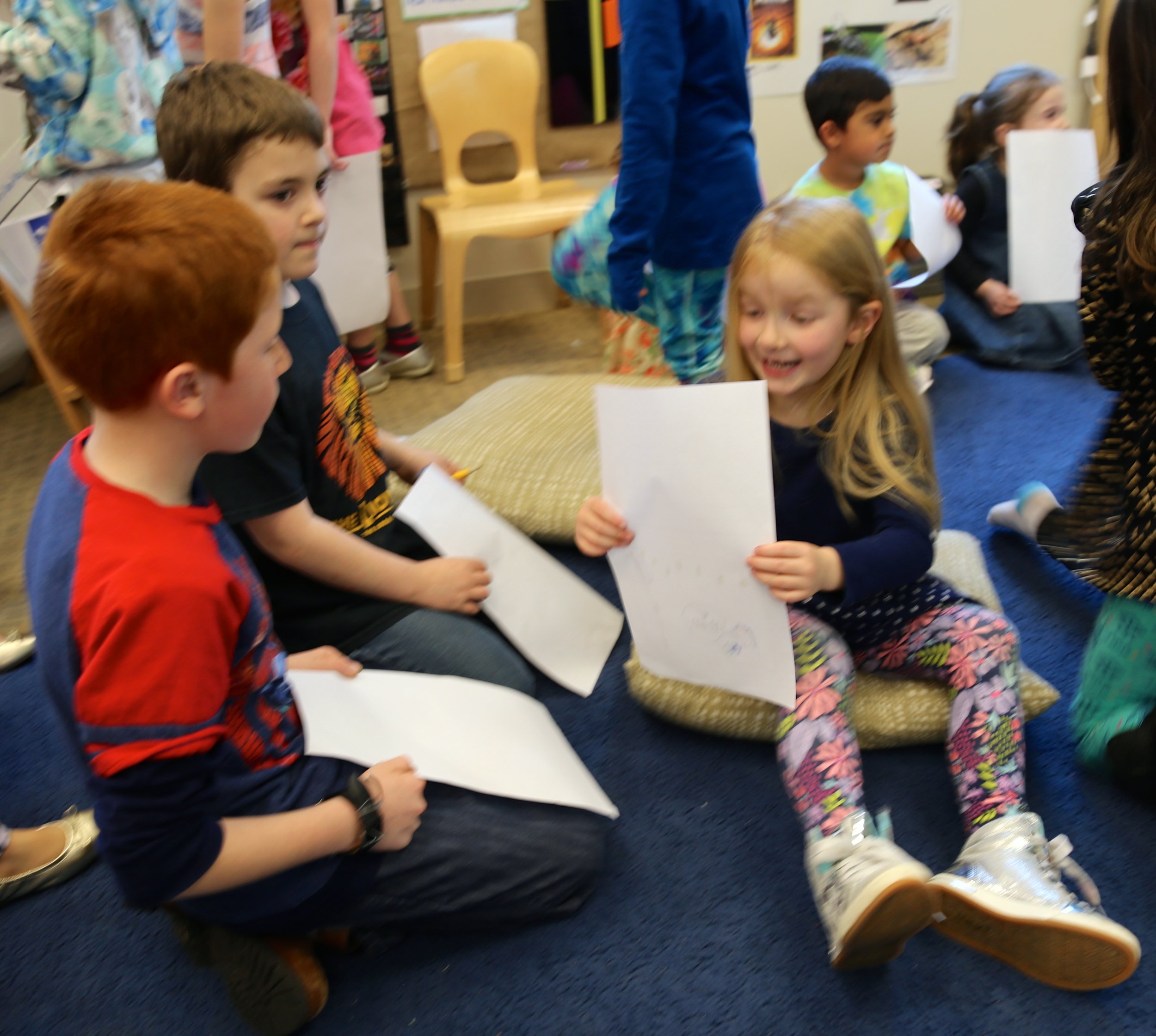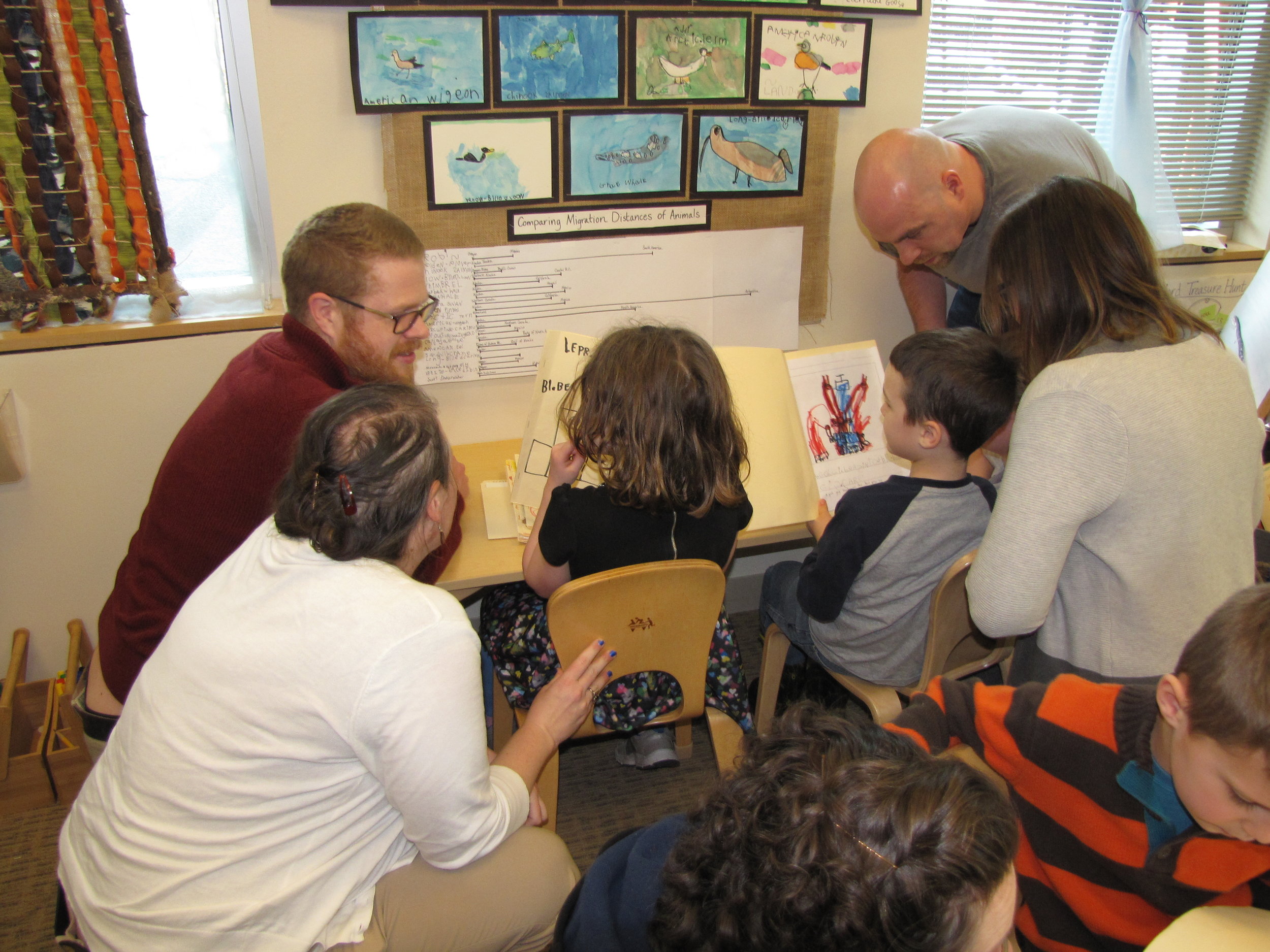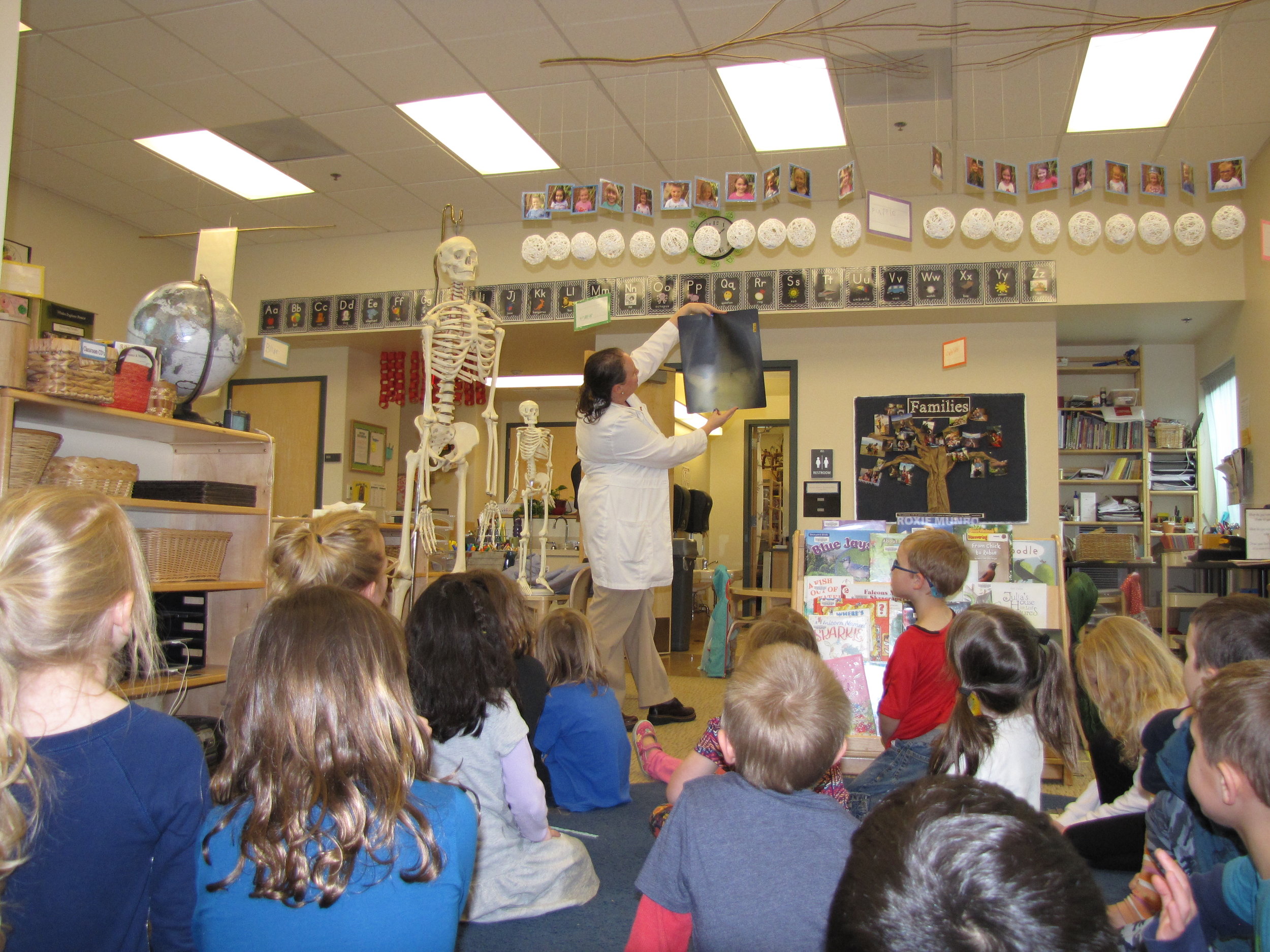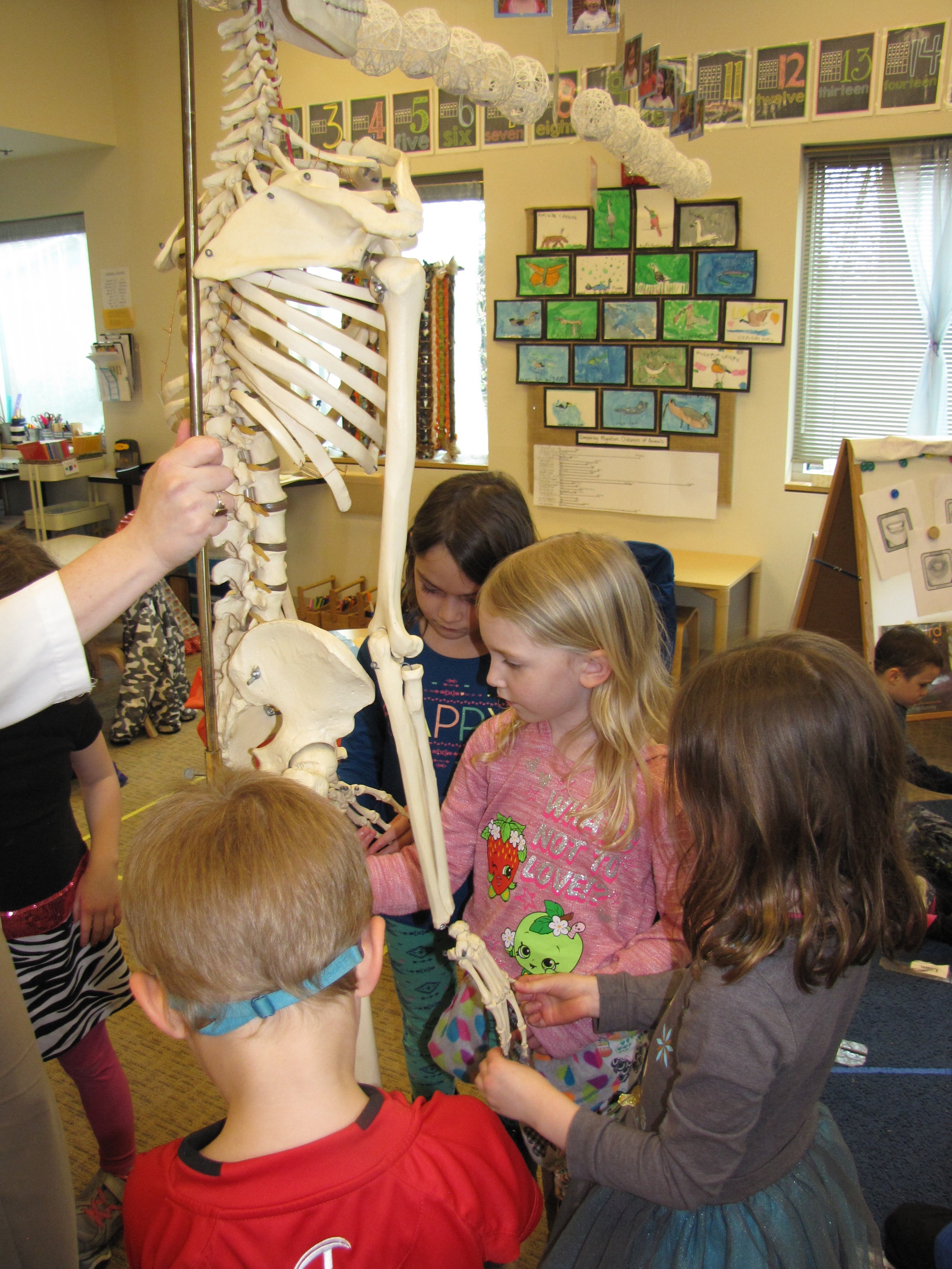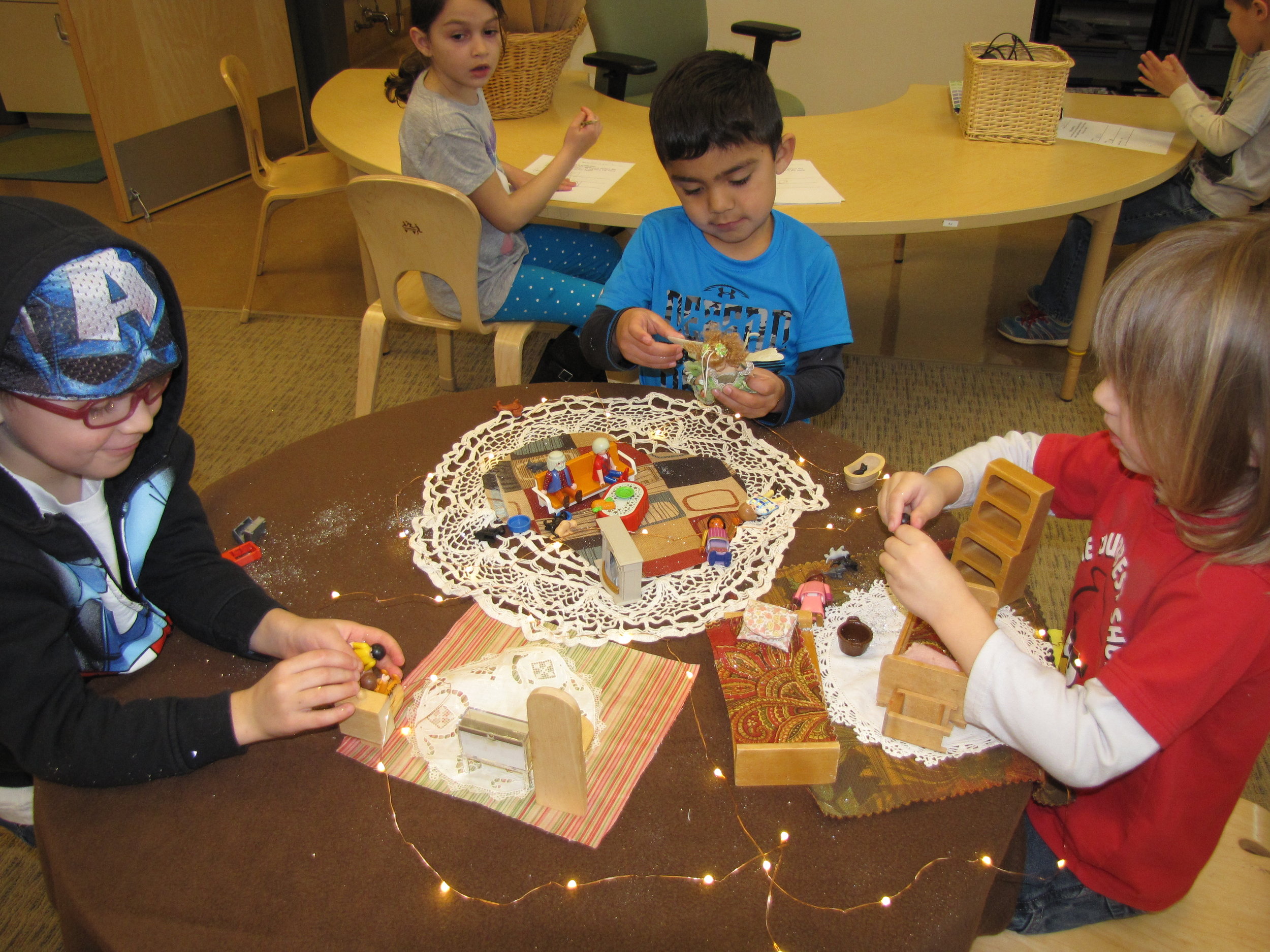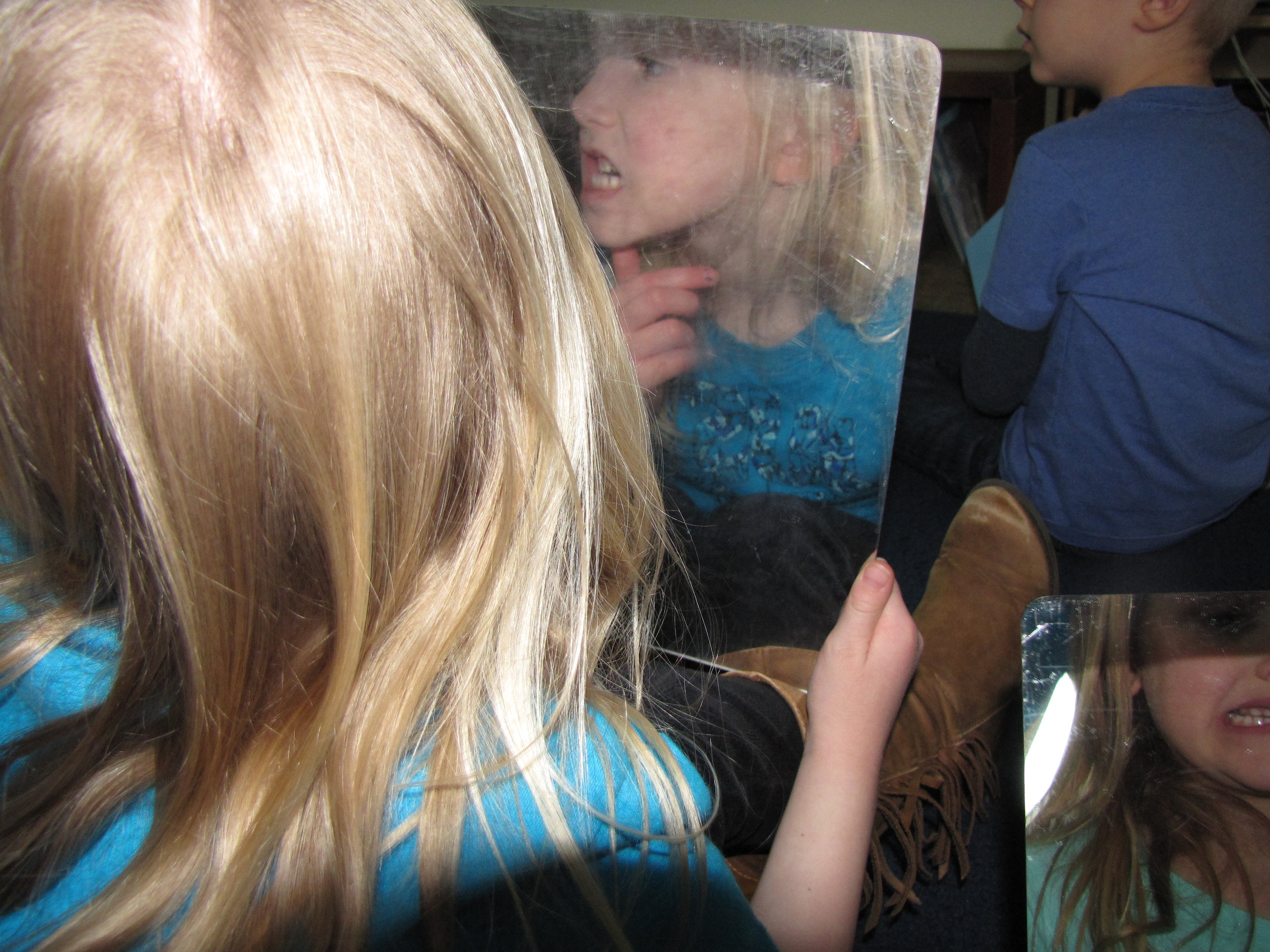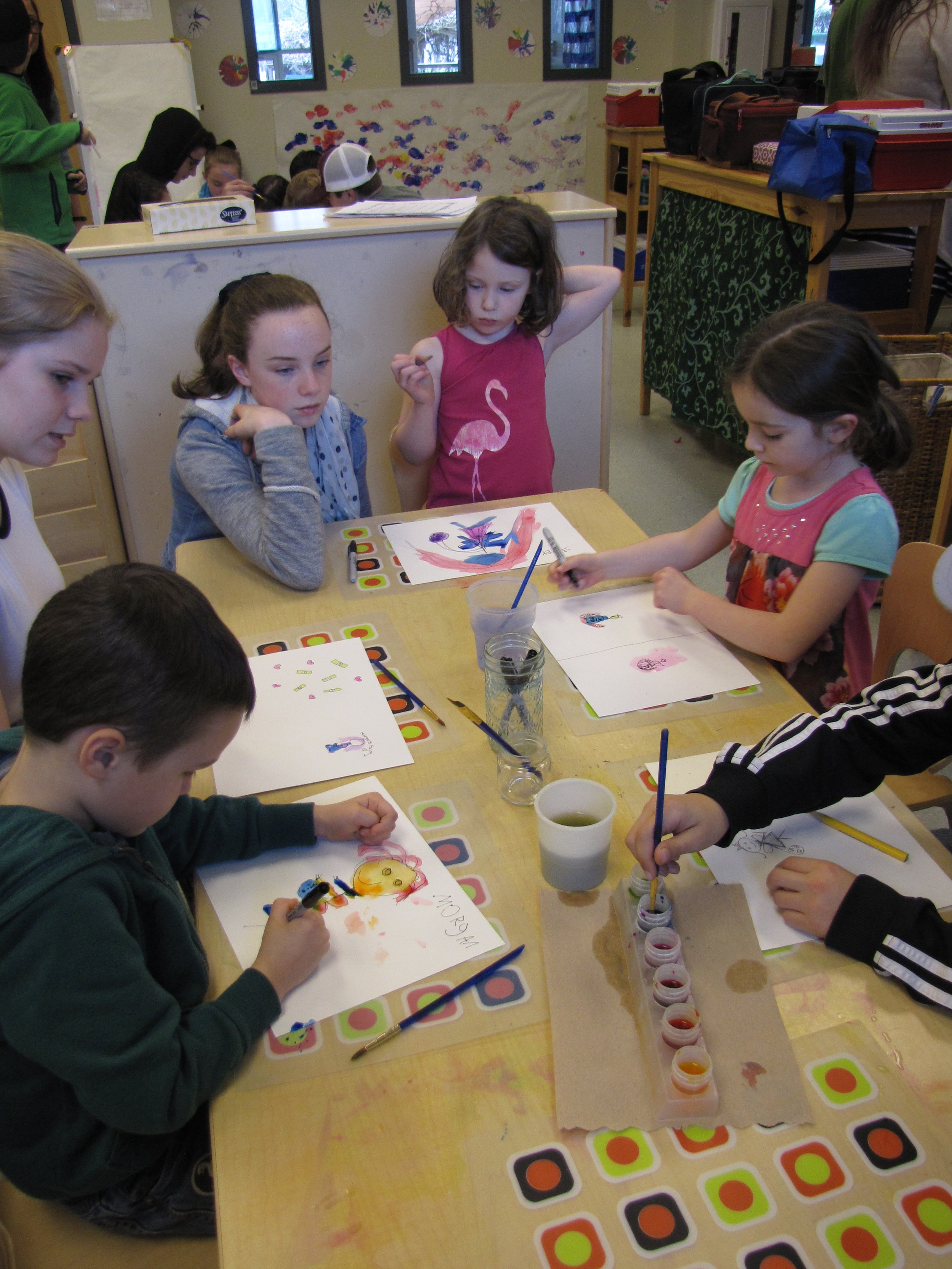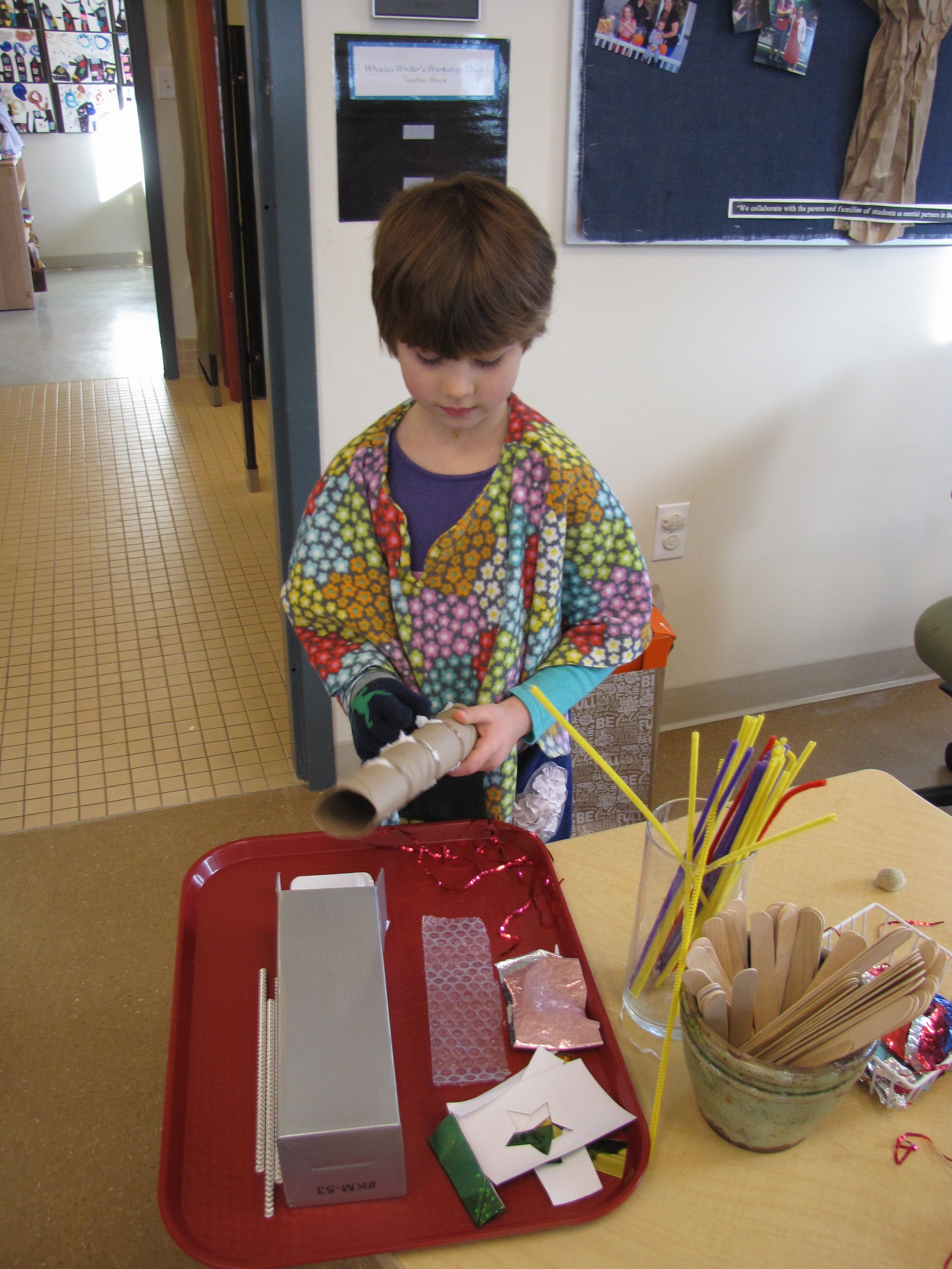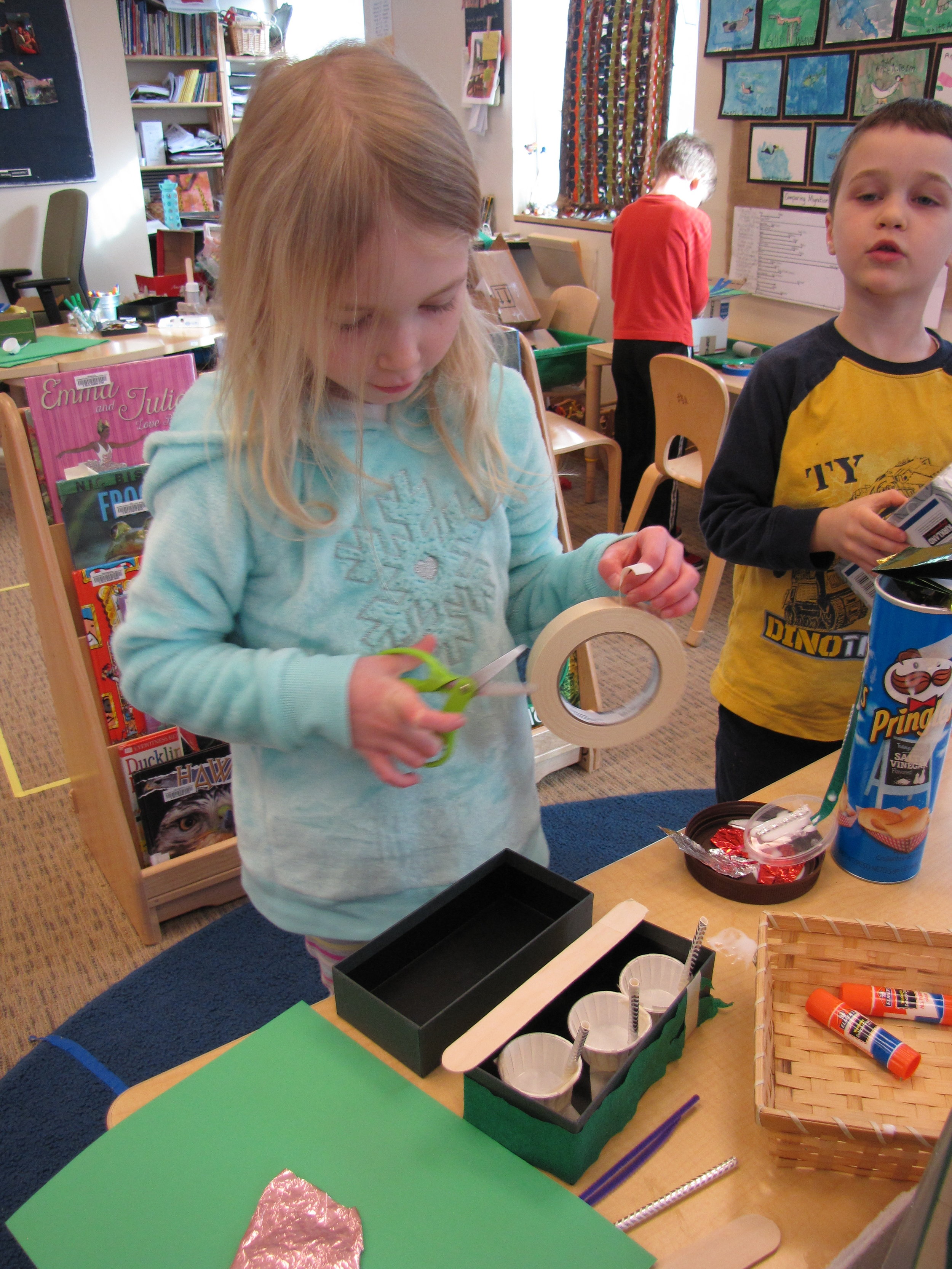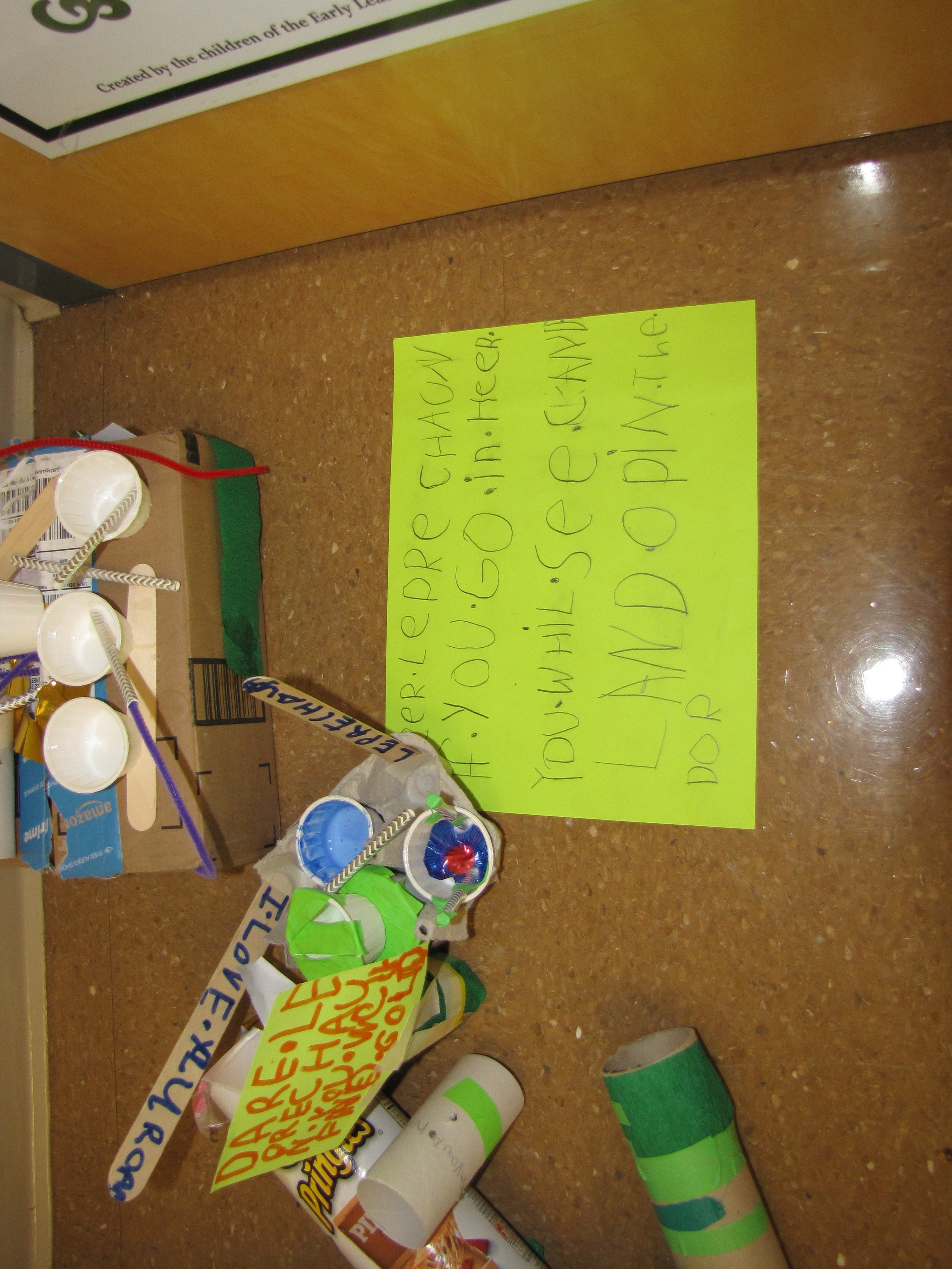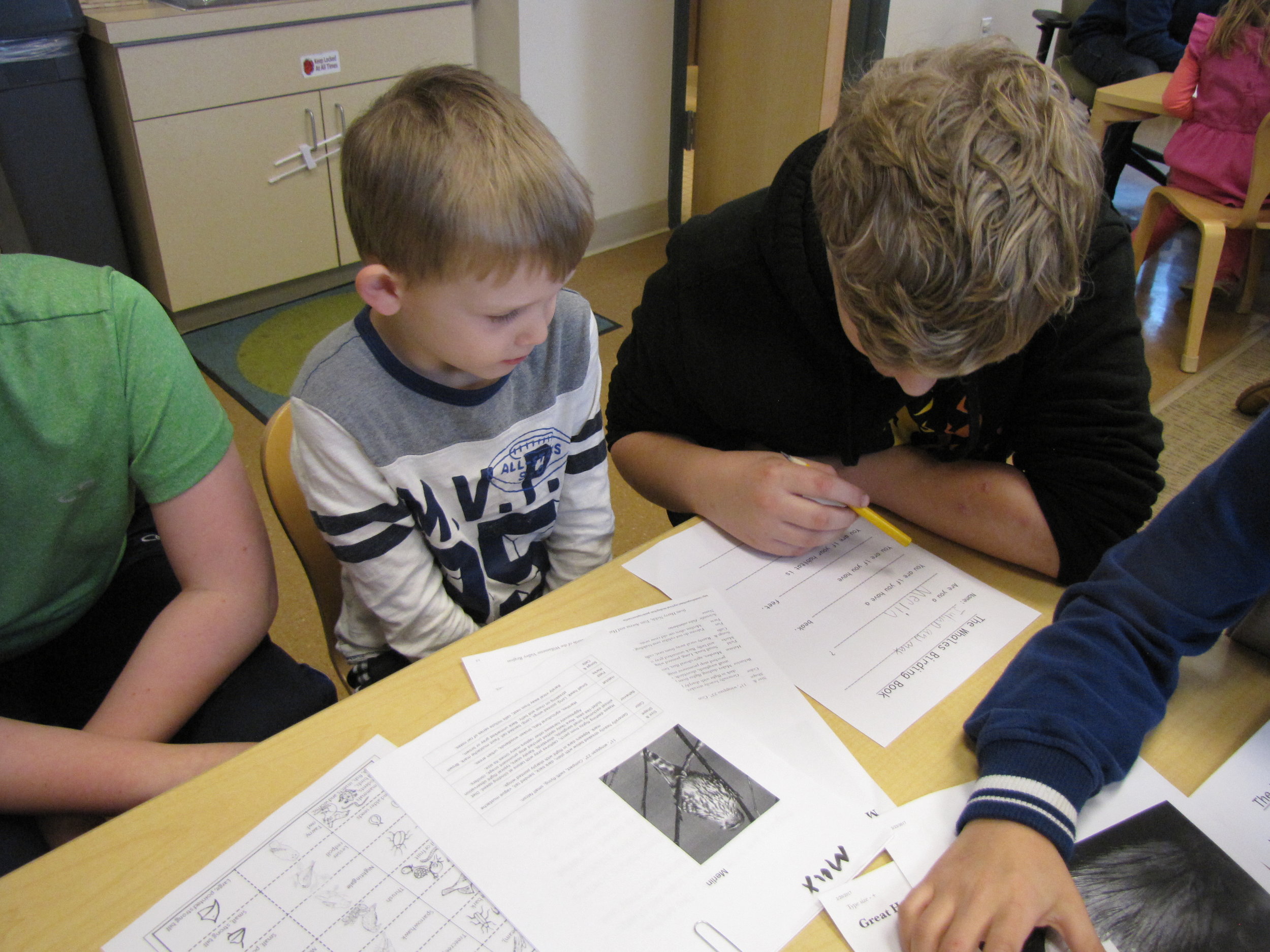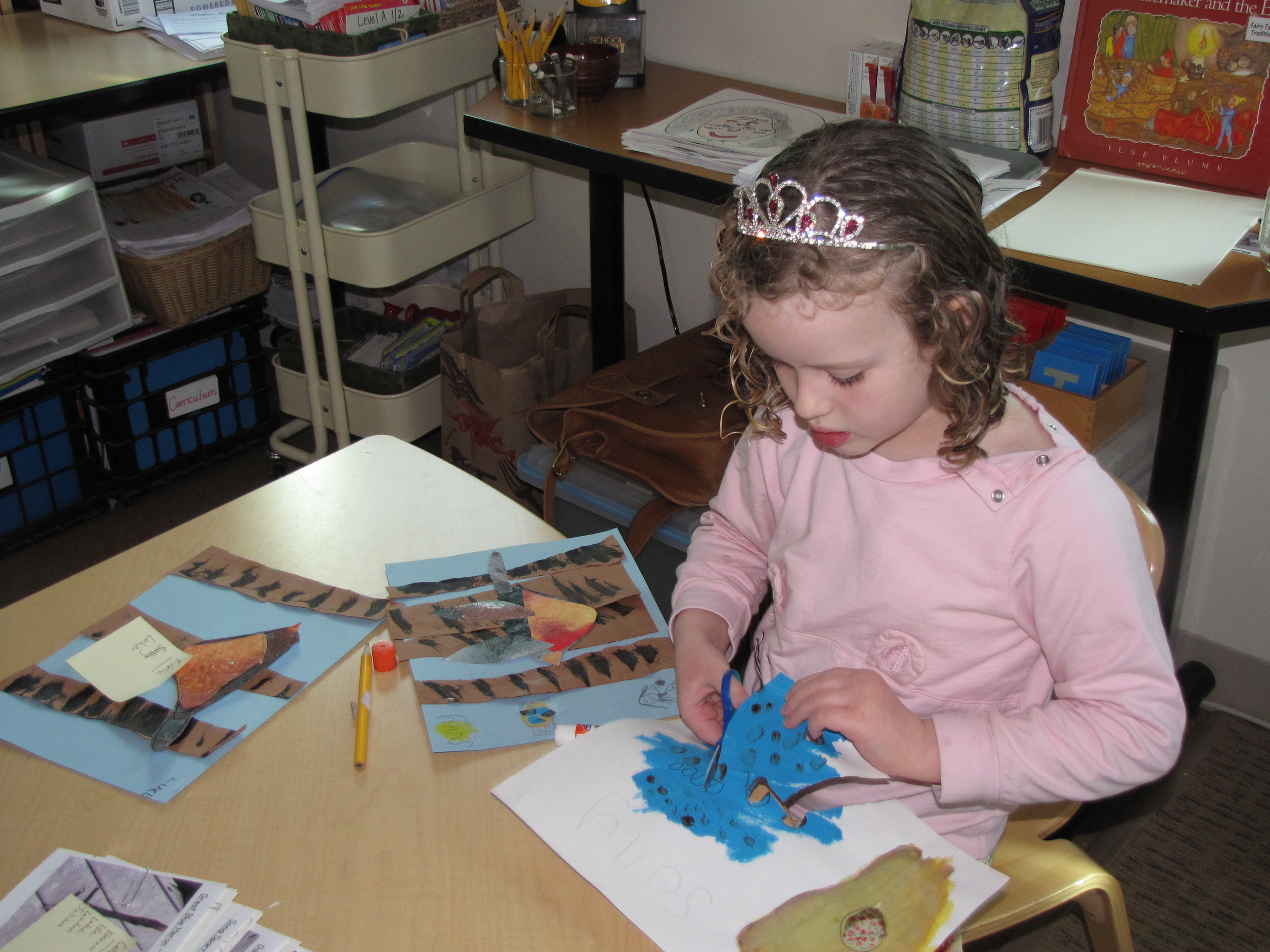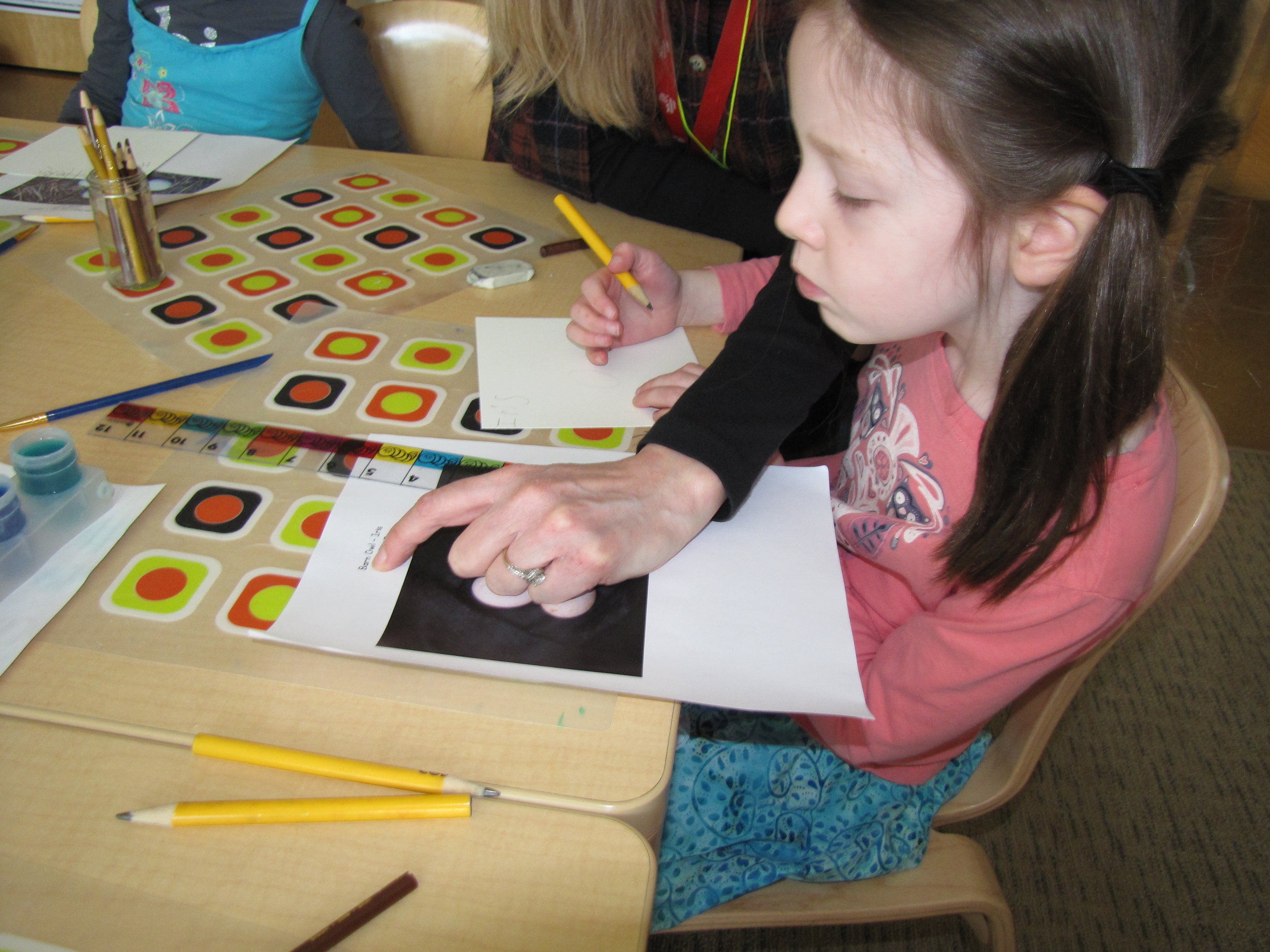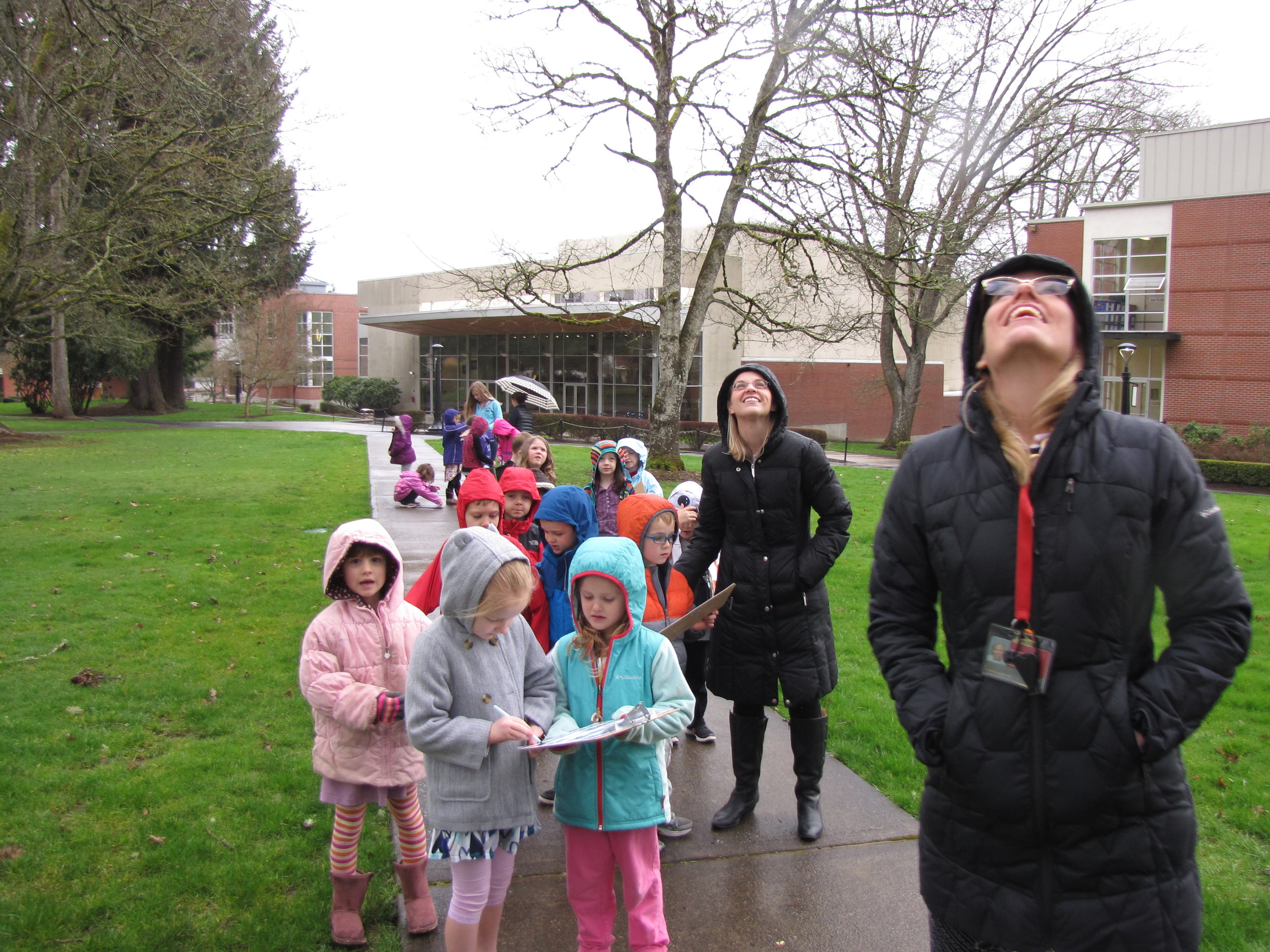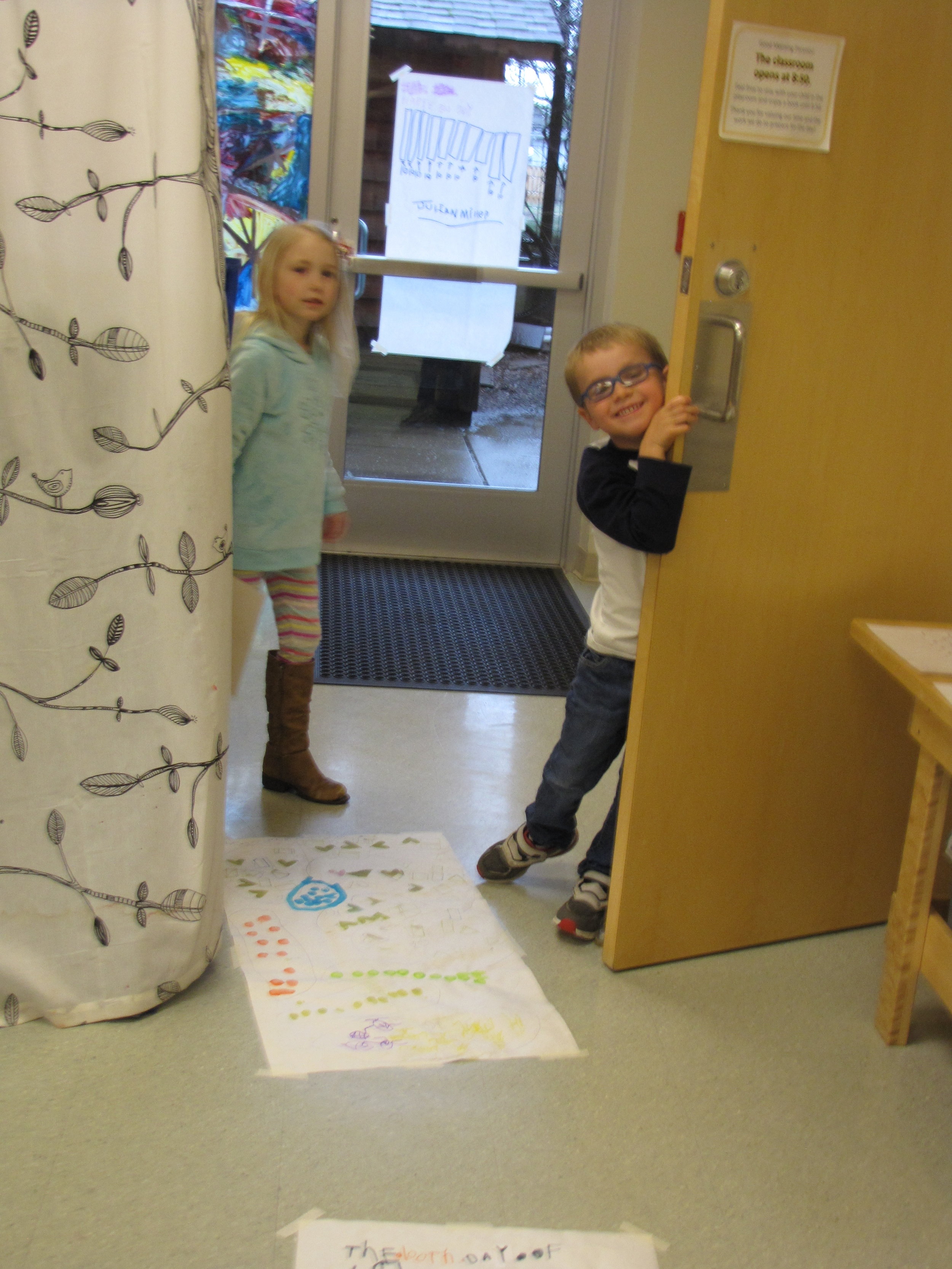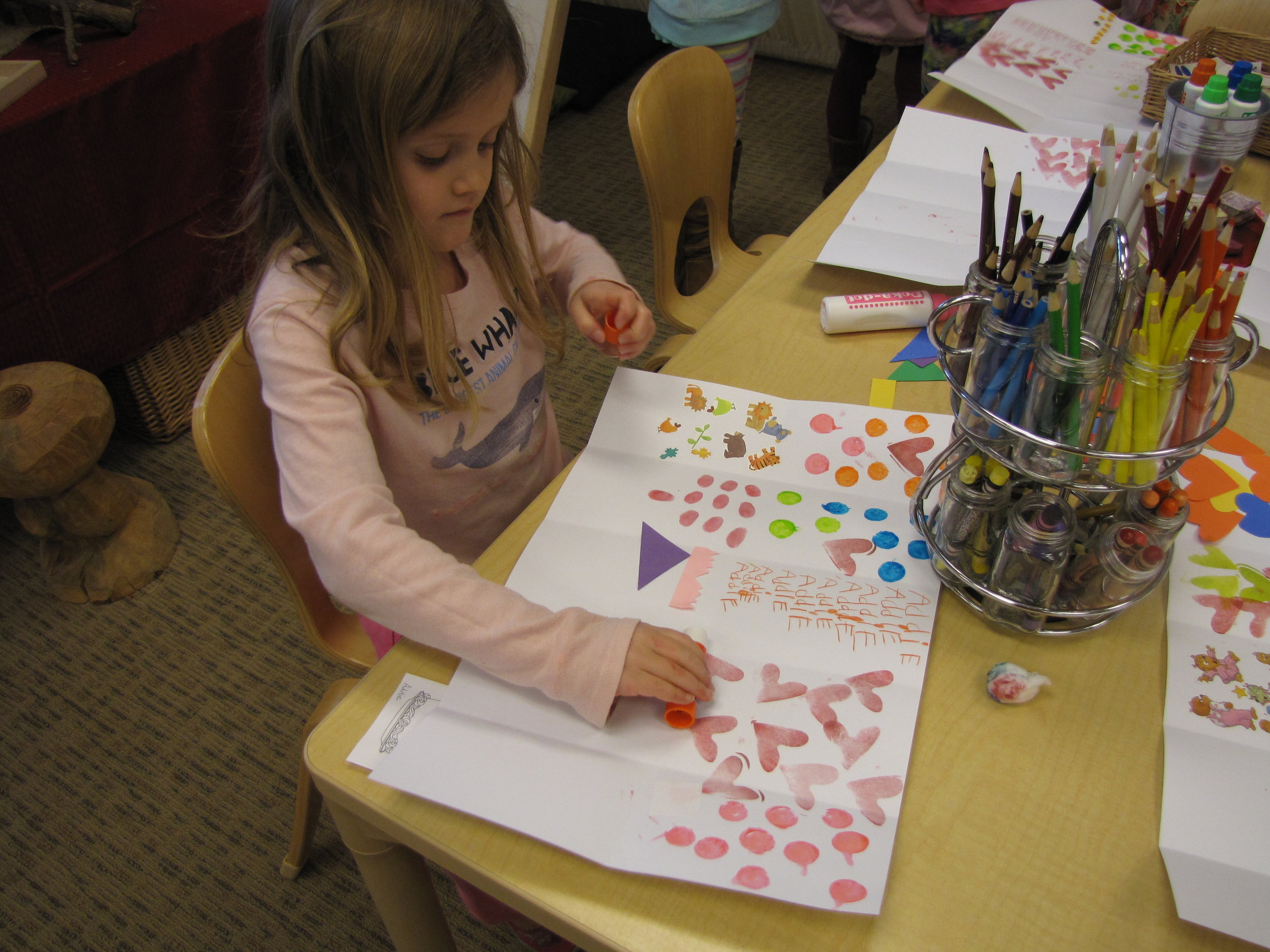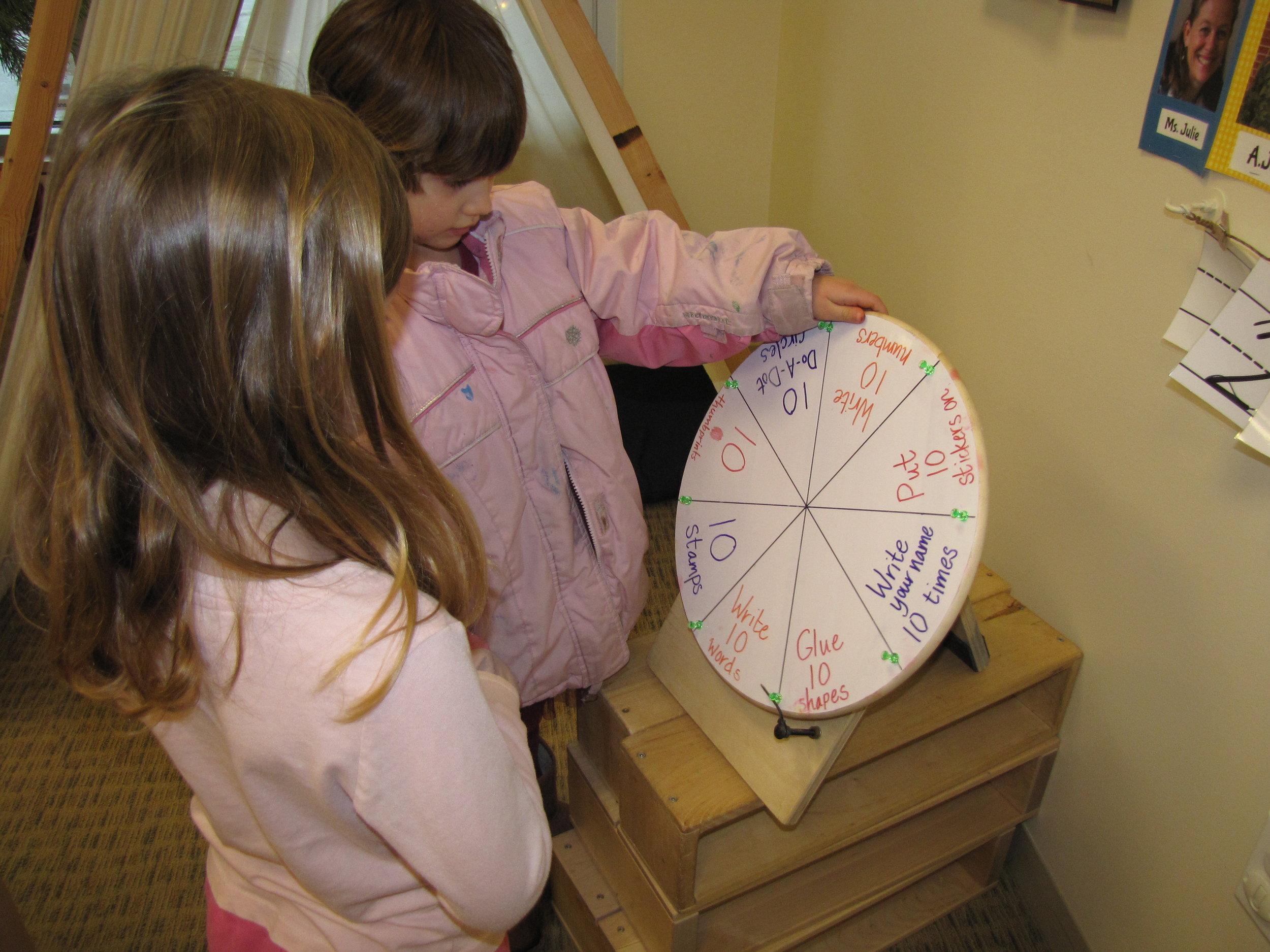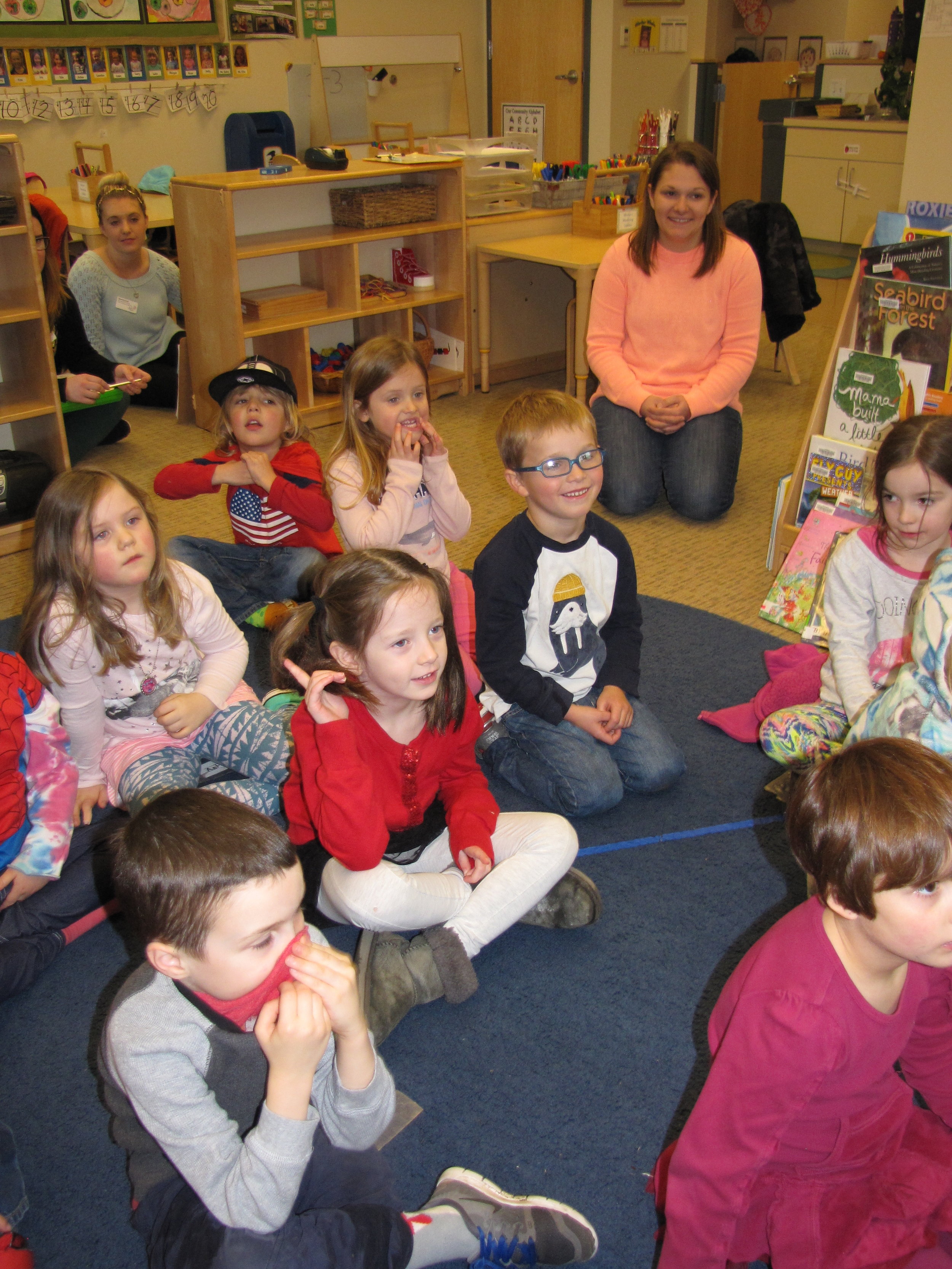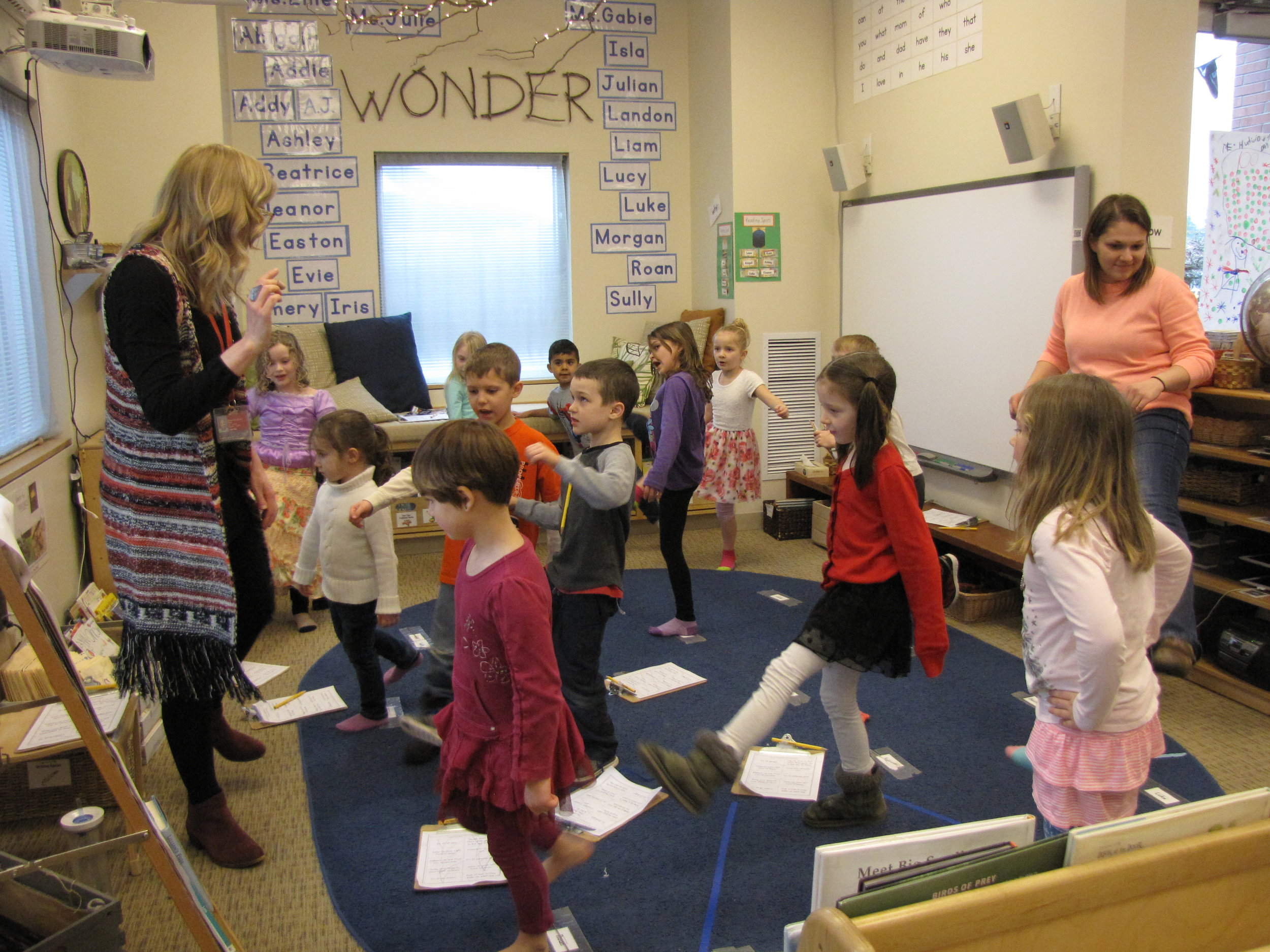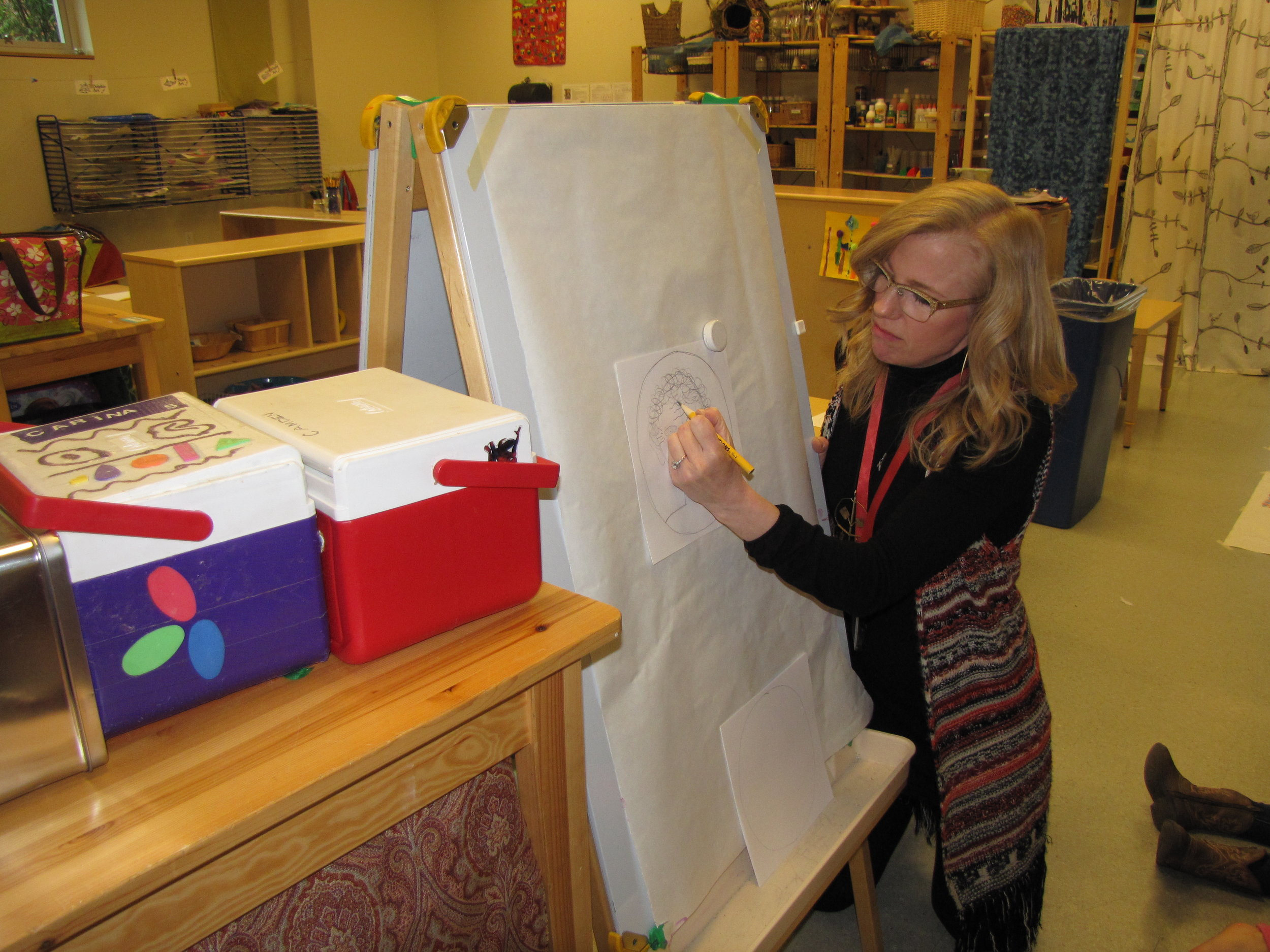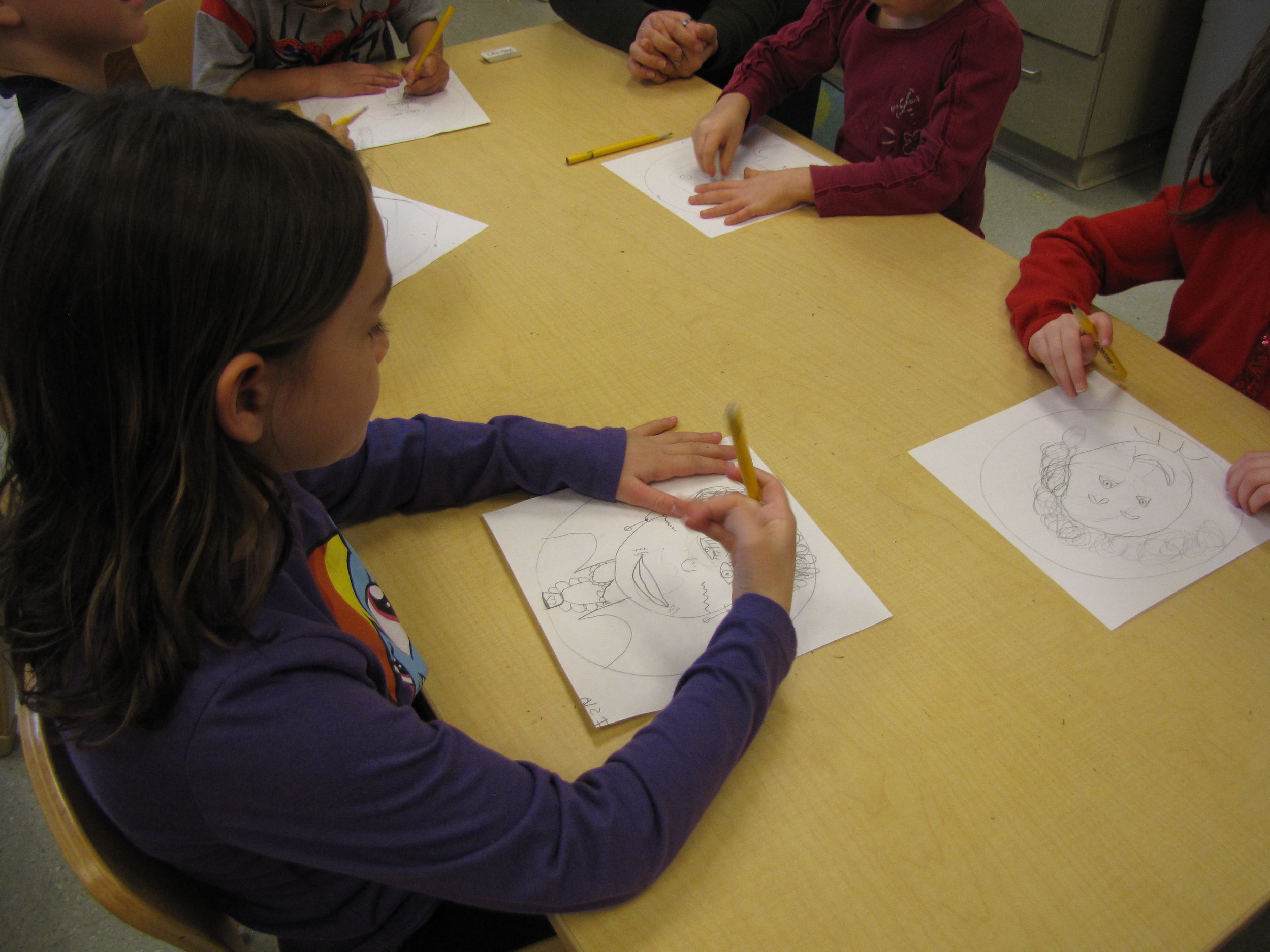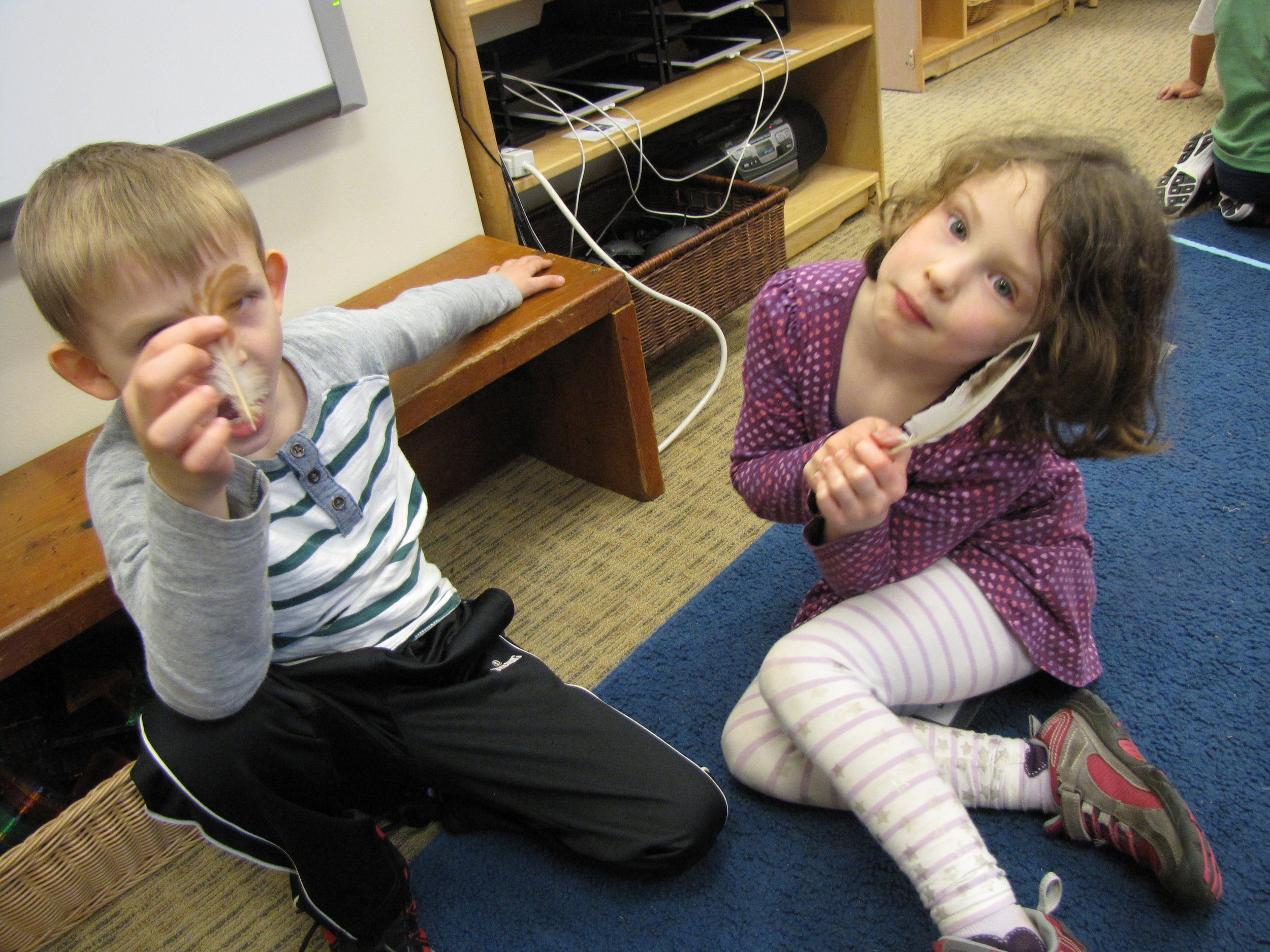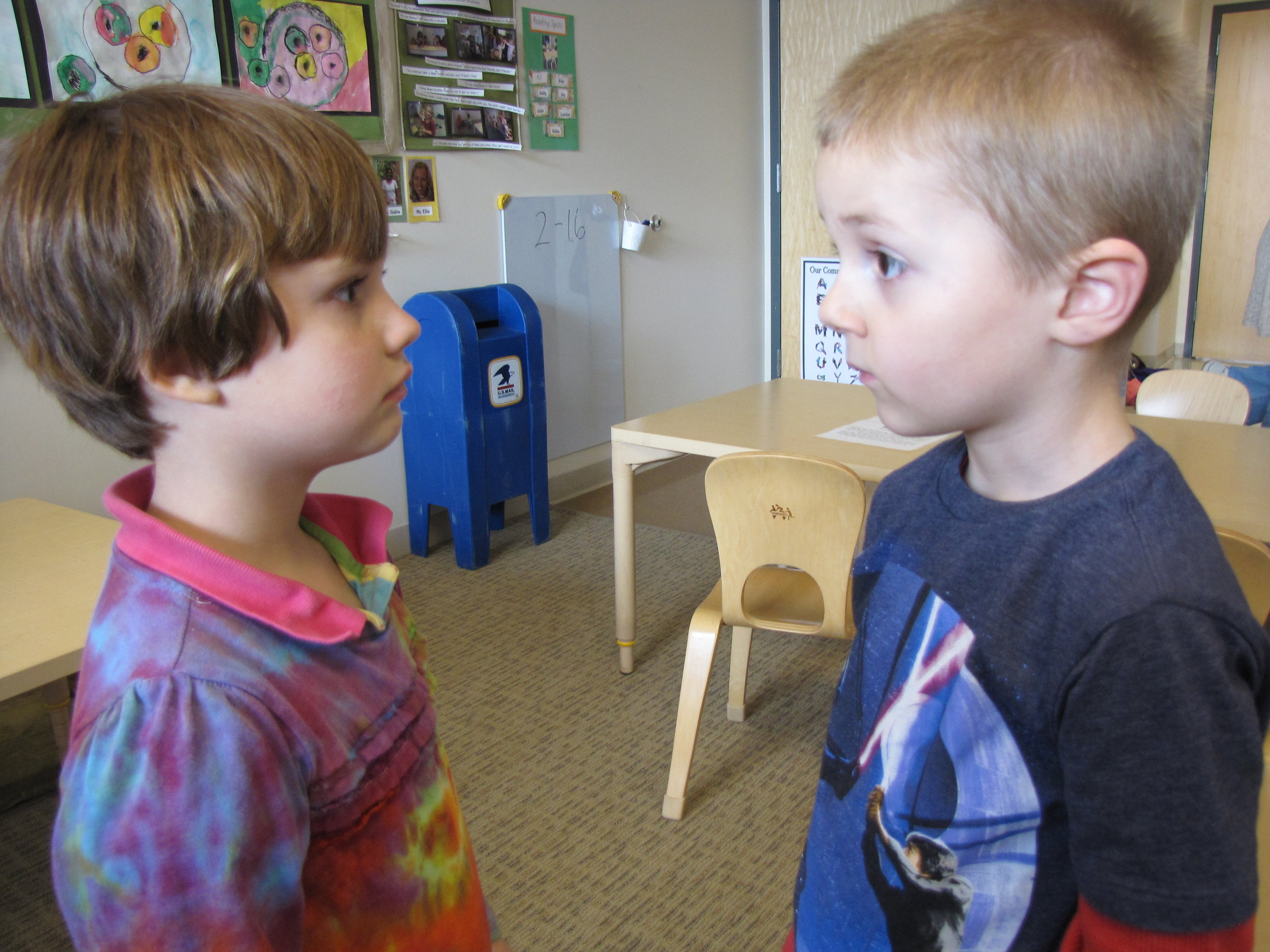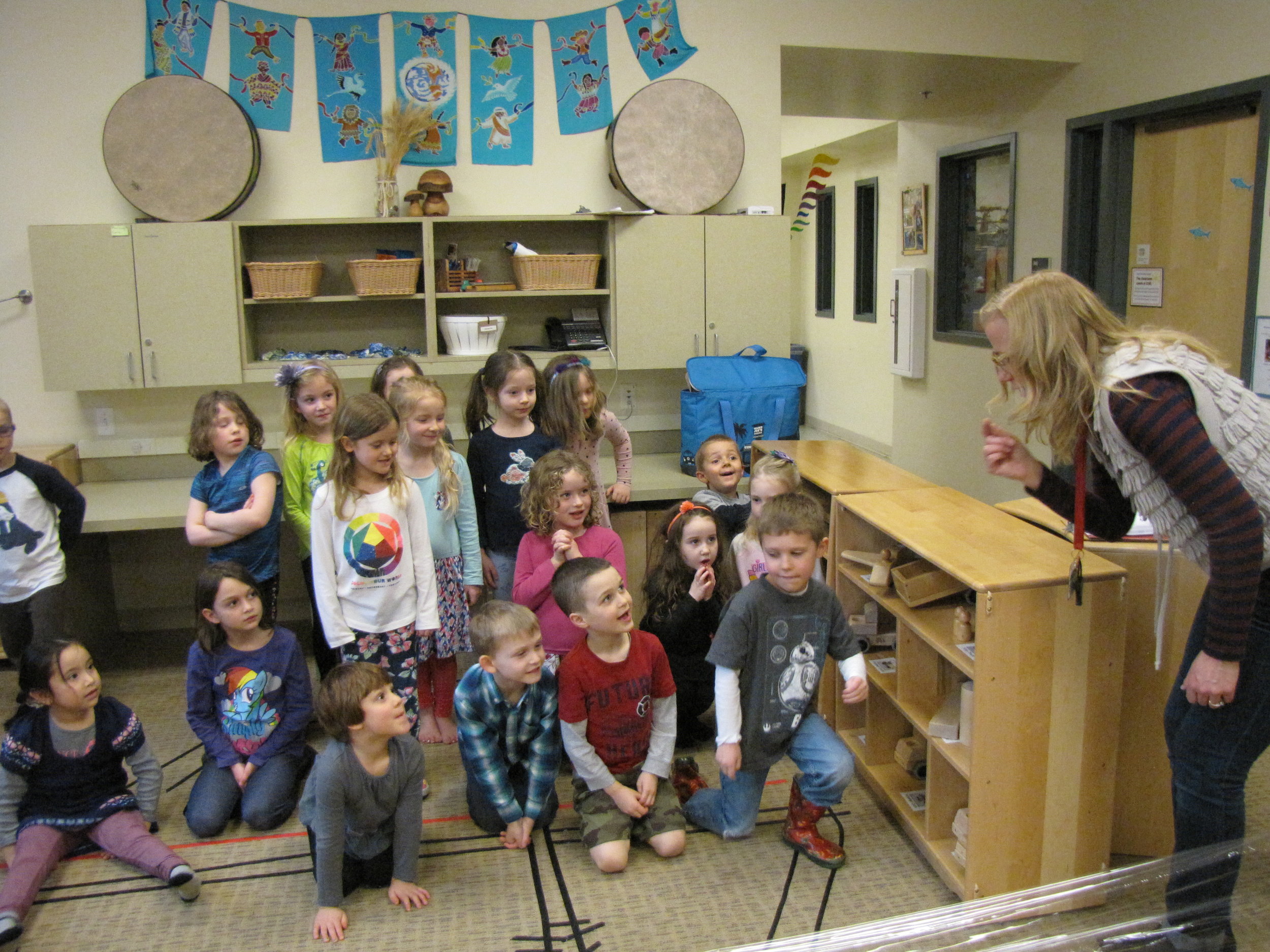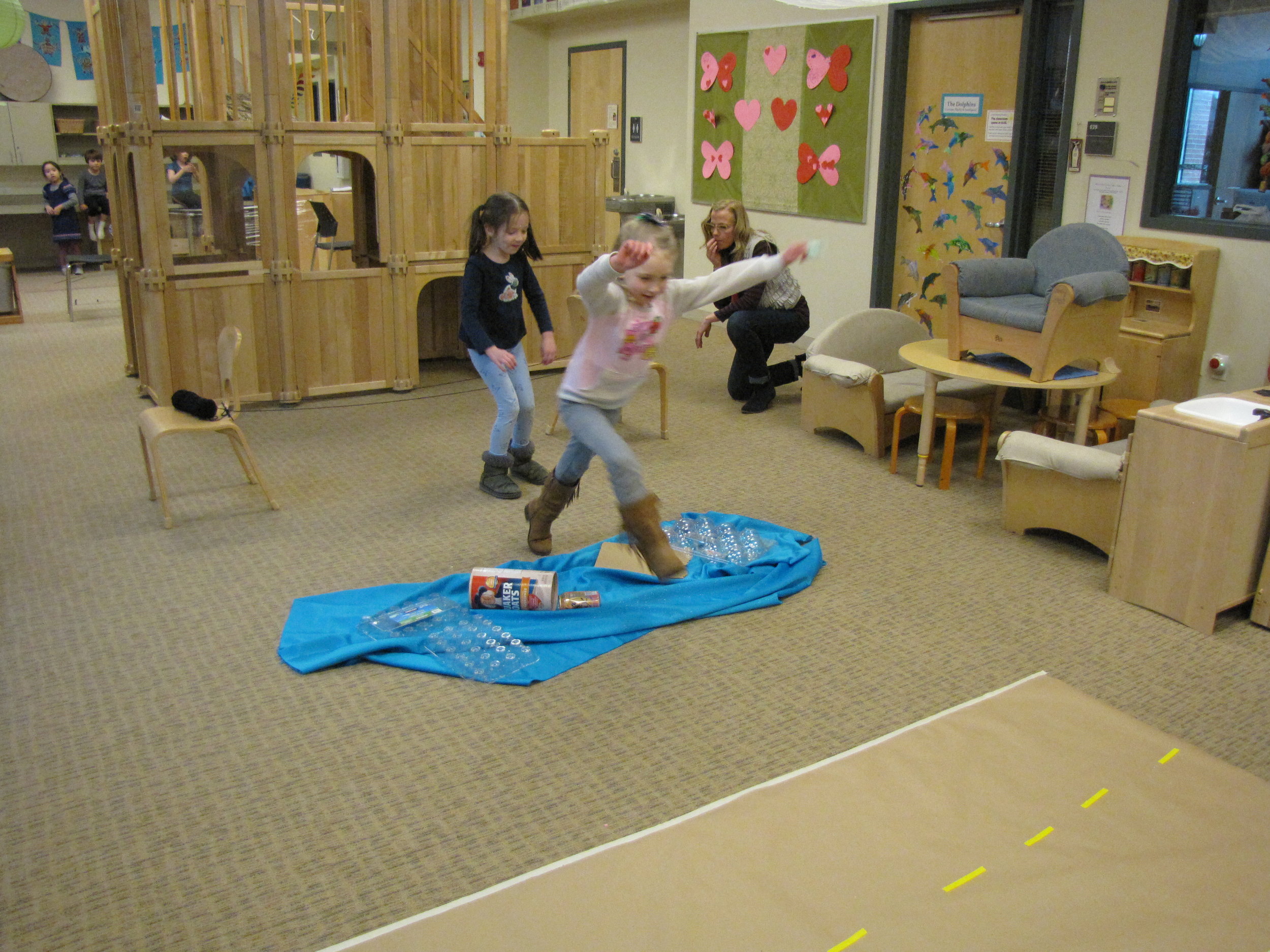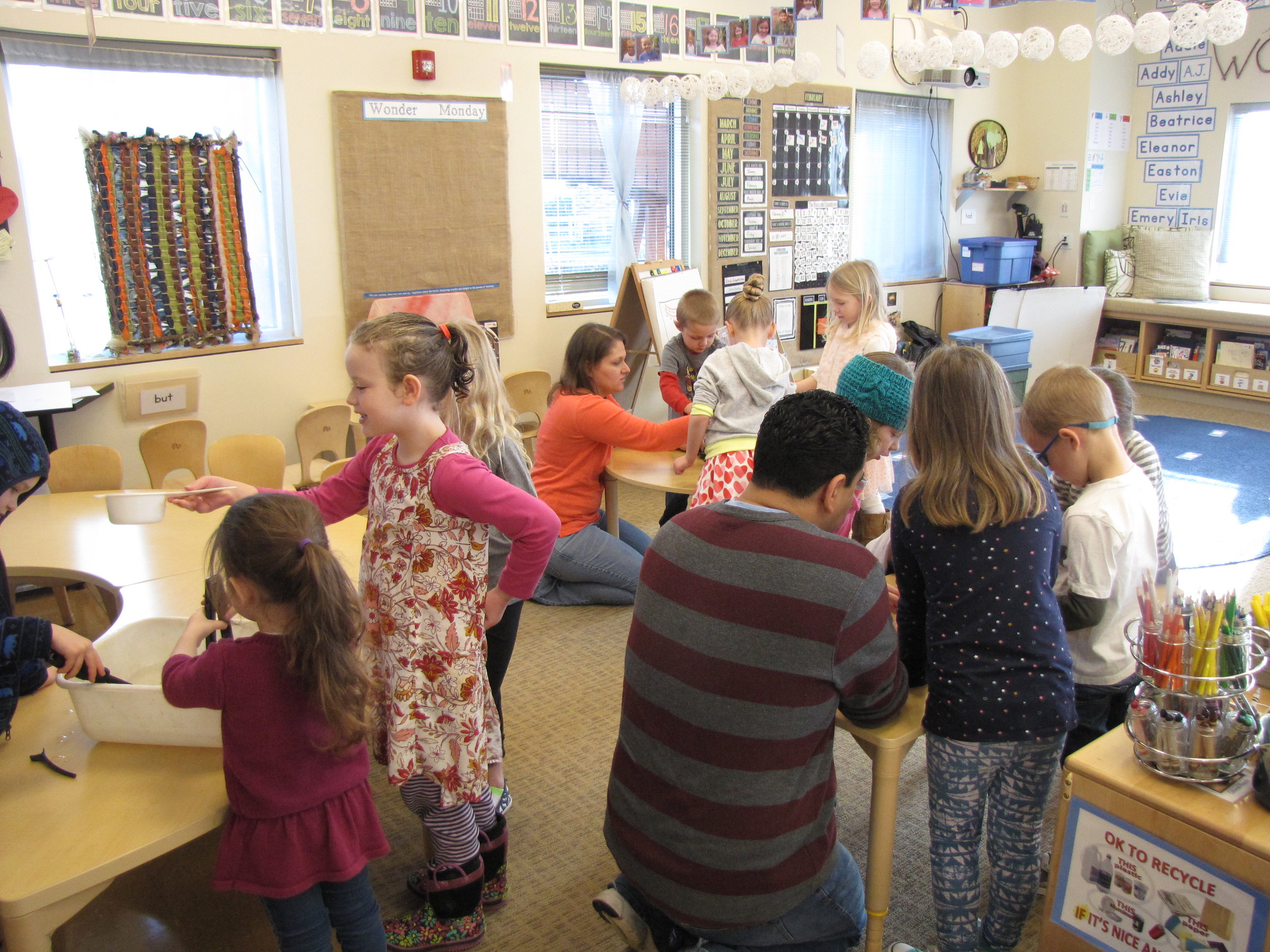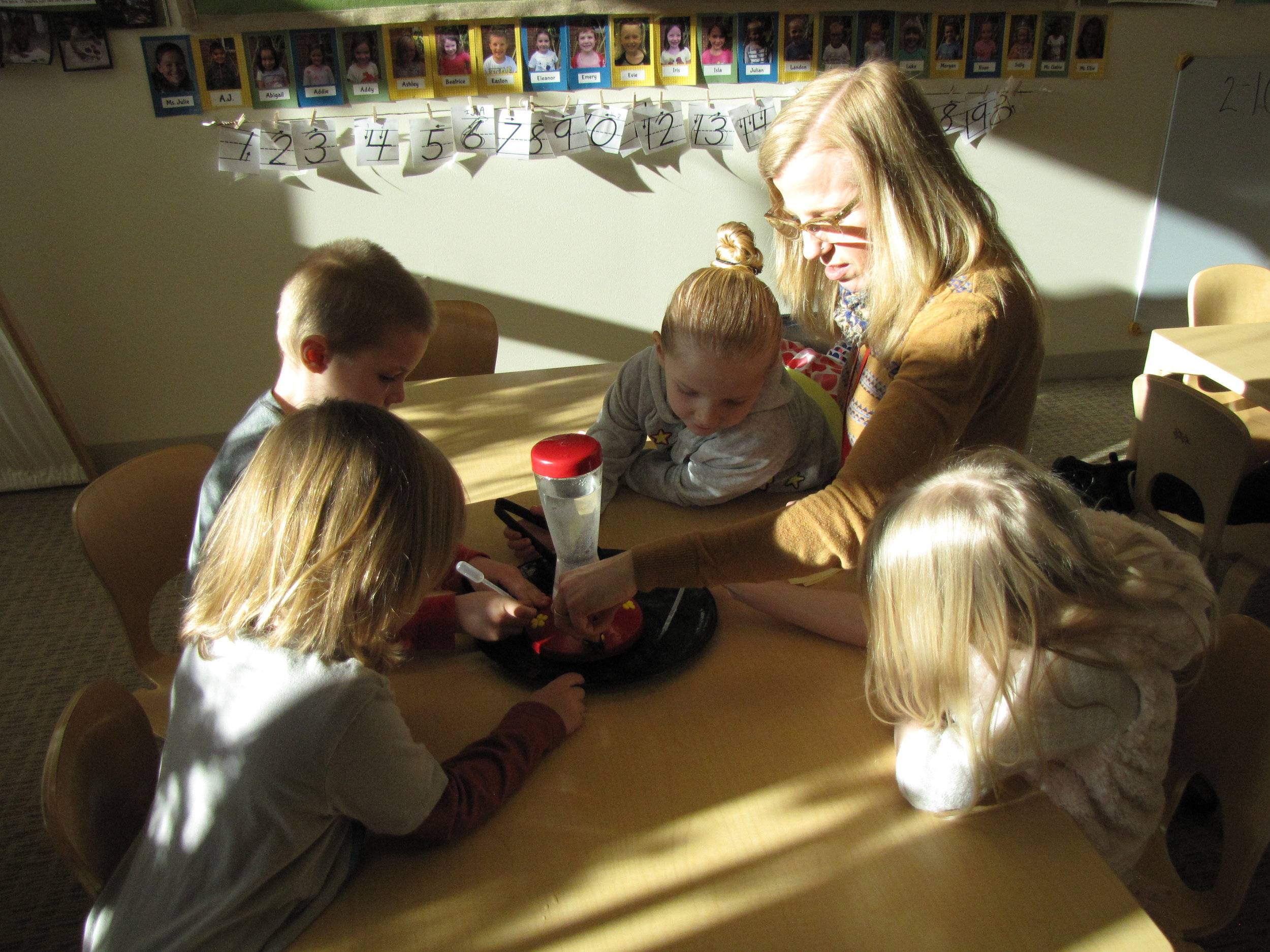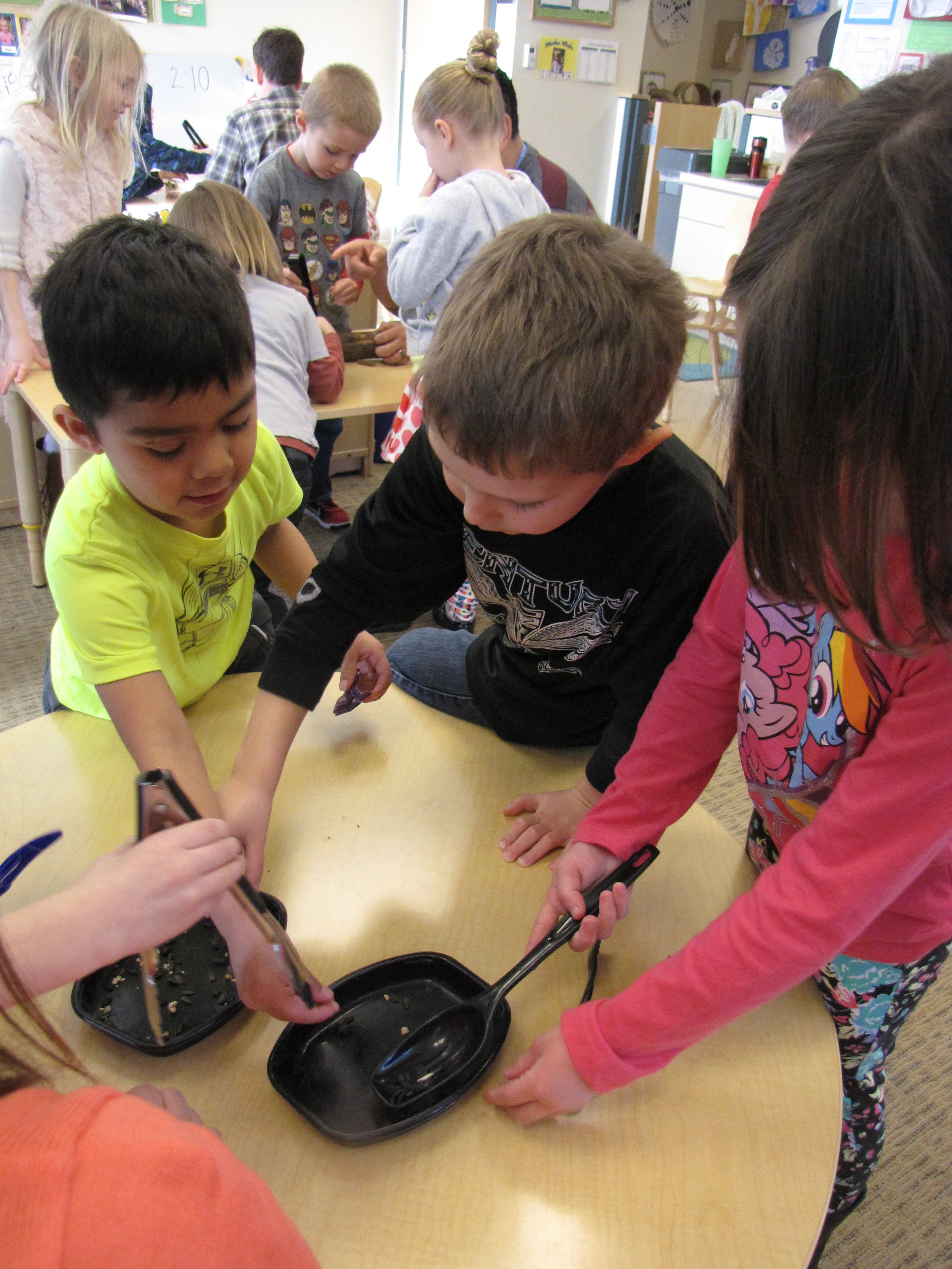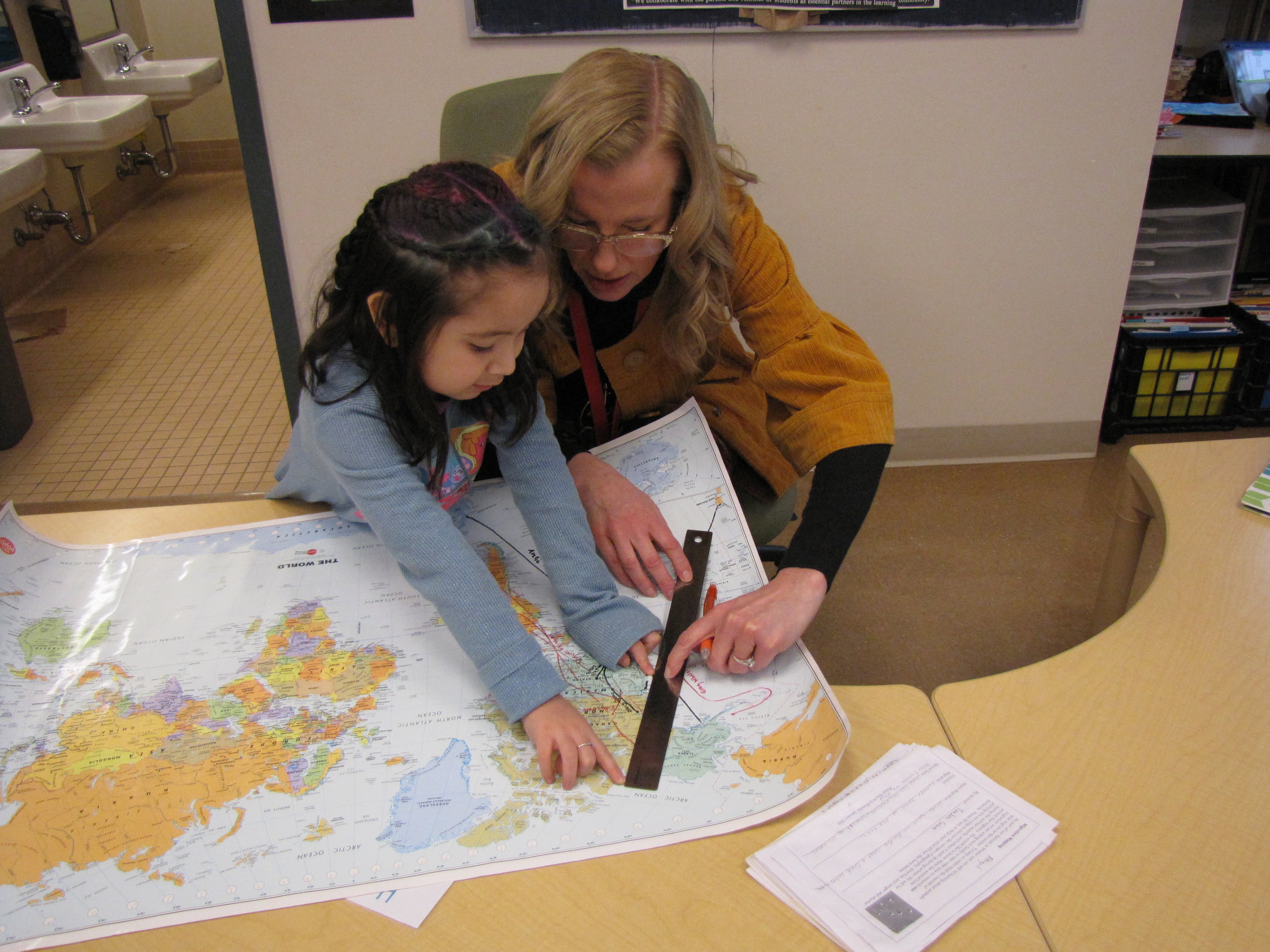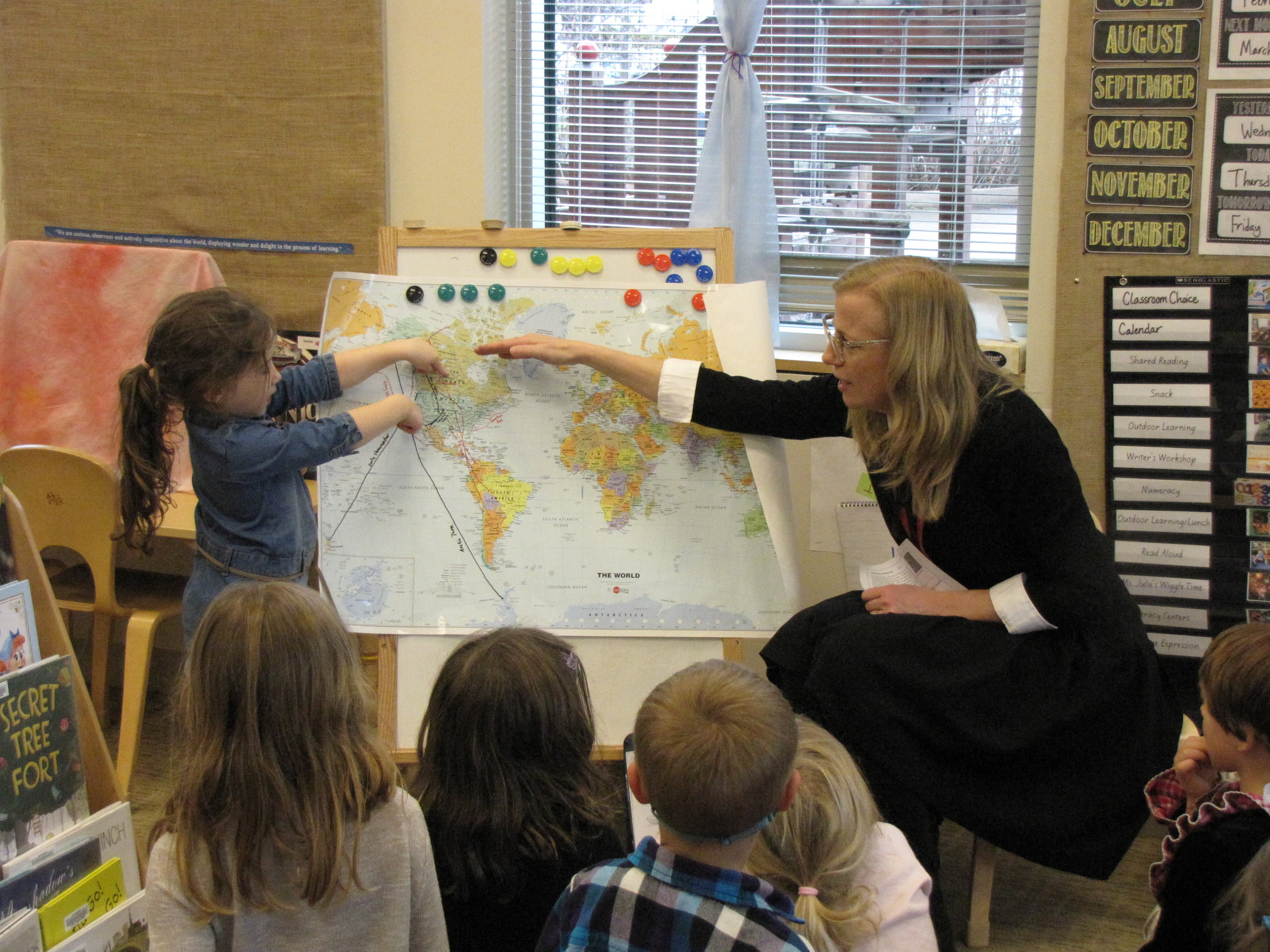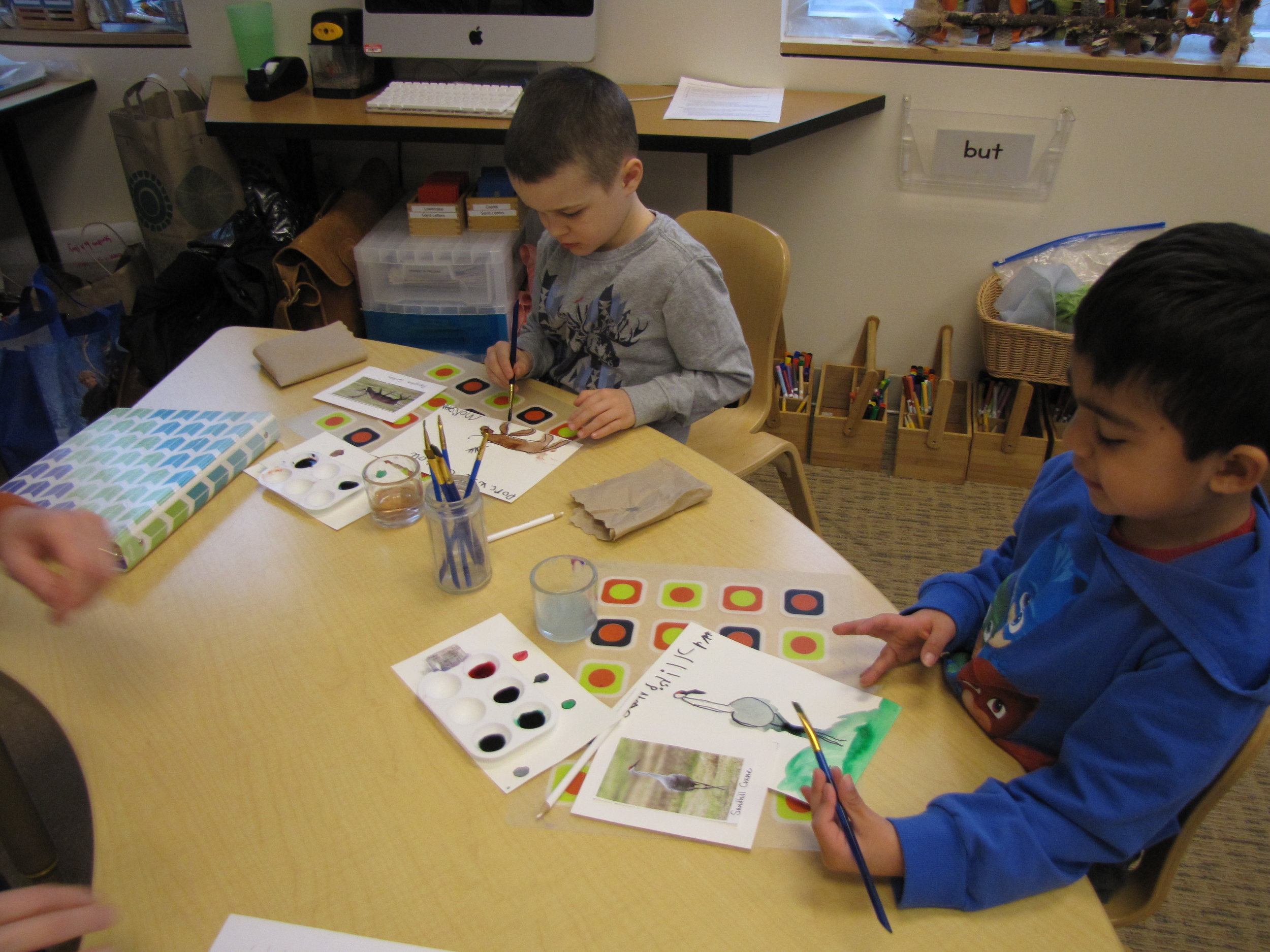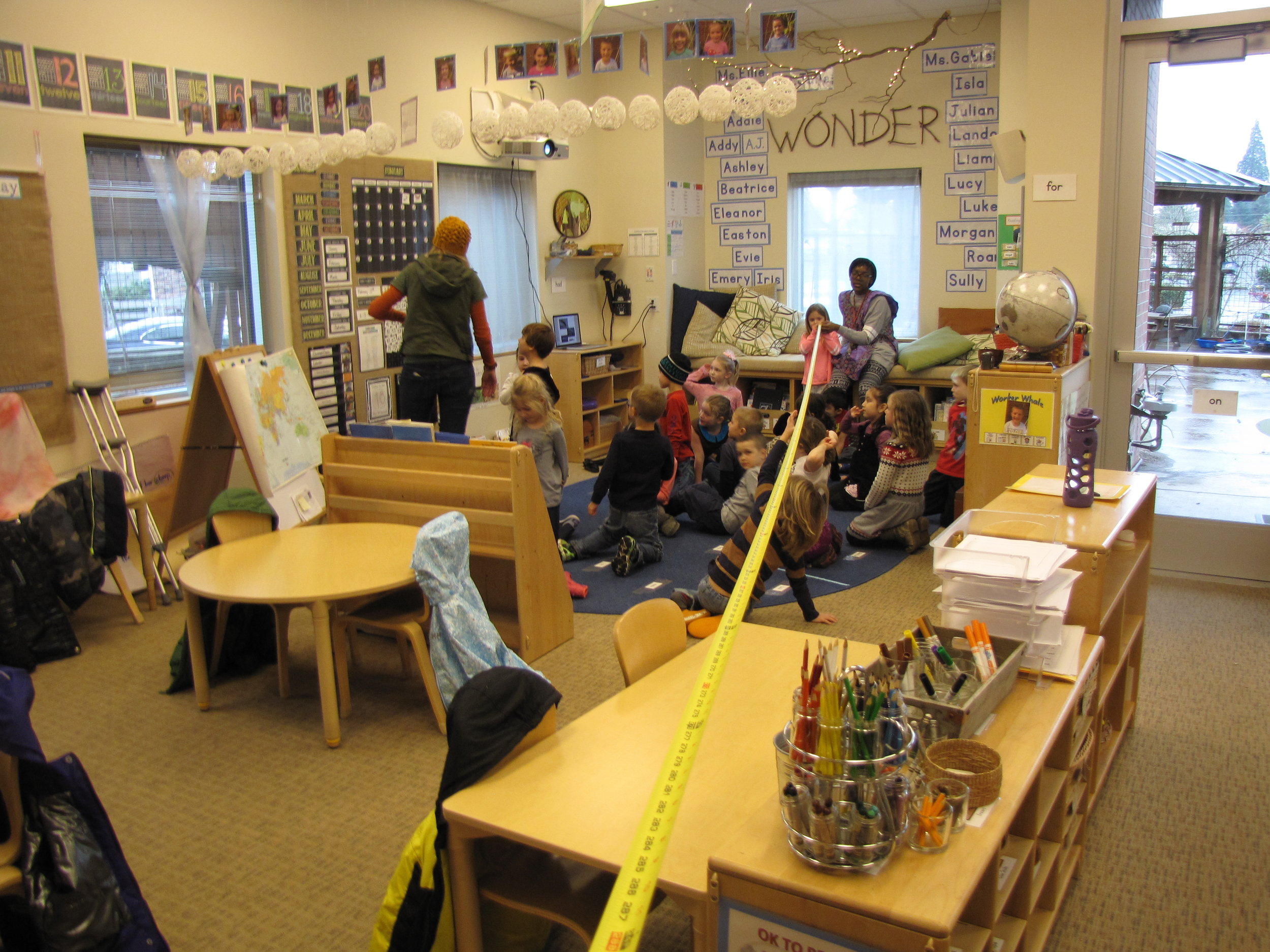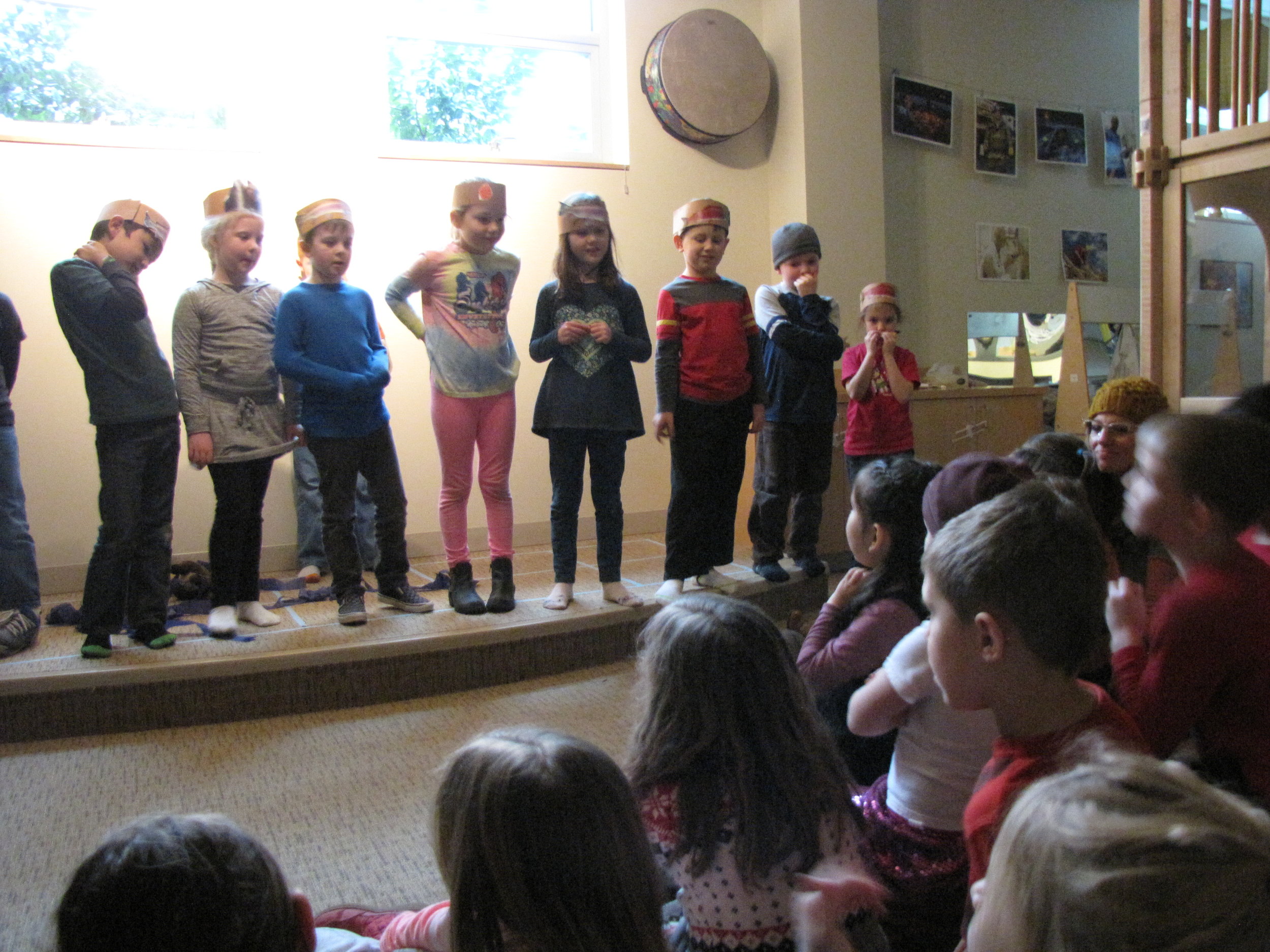Whales Learn About Sunflowers, and more!
/Our first full week together was chock-a-block full of fun! Whales spent mornings visiting our Numeracy Table (where they measured and compared their bodies to sunflowers). Later in the week, the Numeracy Table changed and Whales spent time counting and grouping the sunflower seeds they pulled from the center of our giant sunflower heads - we ended up with 330 seeds! At our Literacy Table, Whales spent time creating our first-letter-sound Alphabet Museum. At our Storytelling Table, Whales worked together to to tell stories of summertime fun. At our ProScope Table, Whales looked closely at the different phases a sunflower goes through. We looked at the stems of sunflowers and compared them to the stems of other flowers. Whales noticed the small holes in the stem of the sunflower, and hypothesized what job they might do. Later in the week, we conducted an experiment with cabbage that showed the process of capillary action and transpiration.
But the sunflower madness didn't stop there! Whales went outside and noticed tiny details in our sunflower garden. They choose their favorite flower, drawing it like a scientist, noticing the shape of the leaves and the color of the ray and disc florets. Whales worked together to re-create the life cycle of the sunflower on the SMARTboard and we watched a video that showed the process of heliotropism and Whales became an entire field of sunflowers, following the path of the sun!
Being the amazing artists that they are, Whales studied the paintings and a bit about the life of Vincent Van Gogh before creating some Van Gogh inspired art using oil pastel and tempera paint. Each one is unique and beautiful!
Along with our sunflower study, Whales spent time getting to know one another better. We built together, danced together, wrote together, and learned special things about each other. Our first week together was filled with joyous fun!















































